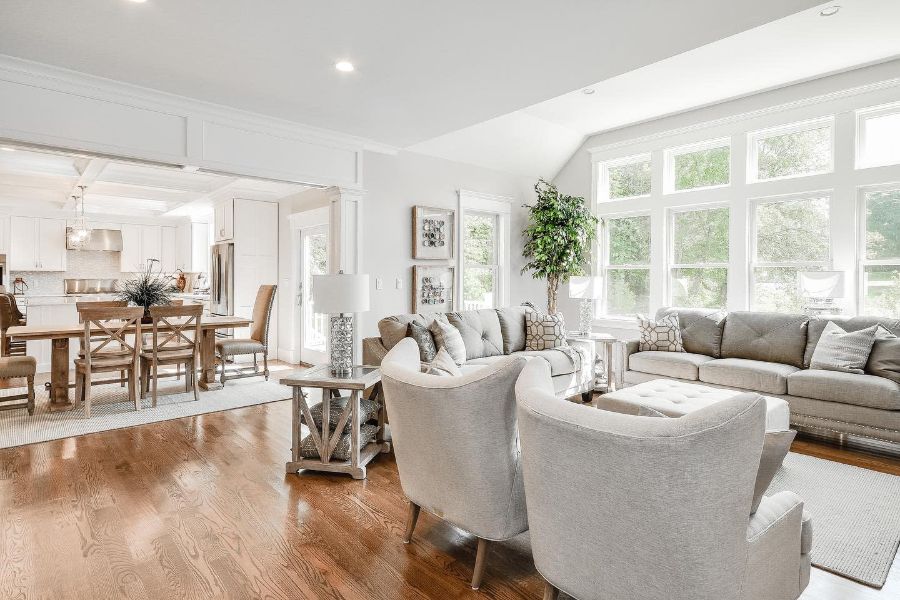
55 Transitional Design Ideas
Embarking on a harmonious journey between the timeless and the contemporary, transitional design emerges as a captivating bridge connecting the worlds of traditional elegance and modern minimalism. In a world where design sensibilities constantly evolve, transitional design stands out as a versatile and alluring approach that captivates both the nostalgia of the past and the sleekness of the future.
Nestled comfortably between the classical and the cutting-edge, transitional design ingeniously blends the warmth of traditional aesthetics with the clean lines and simplicity of modern design. This artful fusion creates spaces that exude both familiarity and freshness, resulting in environments that are both inviting and sophisticated. Through carefully curated contrasts, transitional spaces embrace the best of both worlds, effortlessly merging ornate details with uncluttered forms and rich textures with a soothing color palette.
This article delves deep into the essence of transitional design, unraveling its core principles, and showcasing its transformative power across various spaces. From living rooms that effortlessly blend antique pieces with sleek, contemporary accents, to kitchens that harmonize rustic charm with the functionality of the modern age, we explore how transitional design offers a canvas for self-expression and creativity. Join us in navigating this captivating realm where old meets new, and discover how transitional design encapsulates the spirit of timeless evolution.
See more about - 61 Wall Decor Ideas
Table of Contents
1. Bathroom Transformations With Transitional Design
Transform your bathroom into a timeless and comfortable sanctuary by adopting a transitional design style. The selection of light colors provides the illusion of a large space. The investment in quality tile or flooring can last for the entirety of your homeownership. It’s imperative to select a versatile and sleek style, as remodeling these features can become costly.
The simplicity of clean white countertops creates a polished foundation. Compliment the brightness of the room with features such as rich wood grains to create a sense of drama.
Installing a freestanding tub will immediately become the focal point of the room. Elevate its classic charm with gold or metal faucets and embellishments. The same approach can apply to a traditional vanity to create cohesion throughout the bathroom. Combine decor and furnishings across a variety of decades to complete the transitional look.
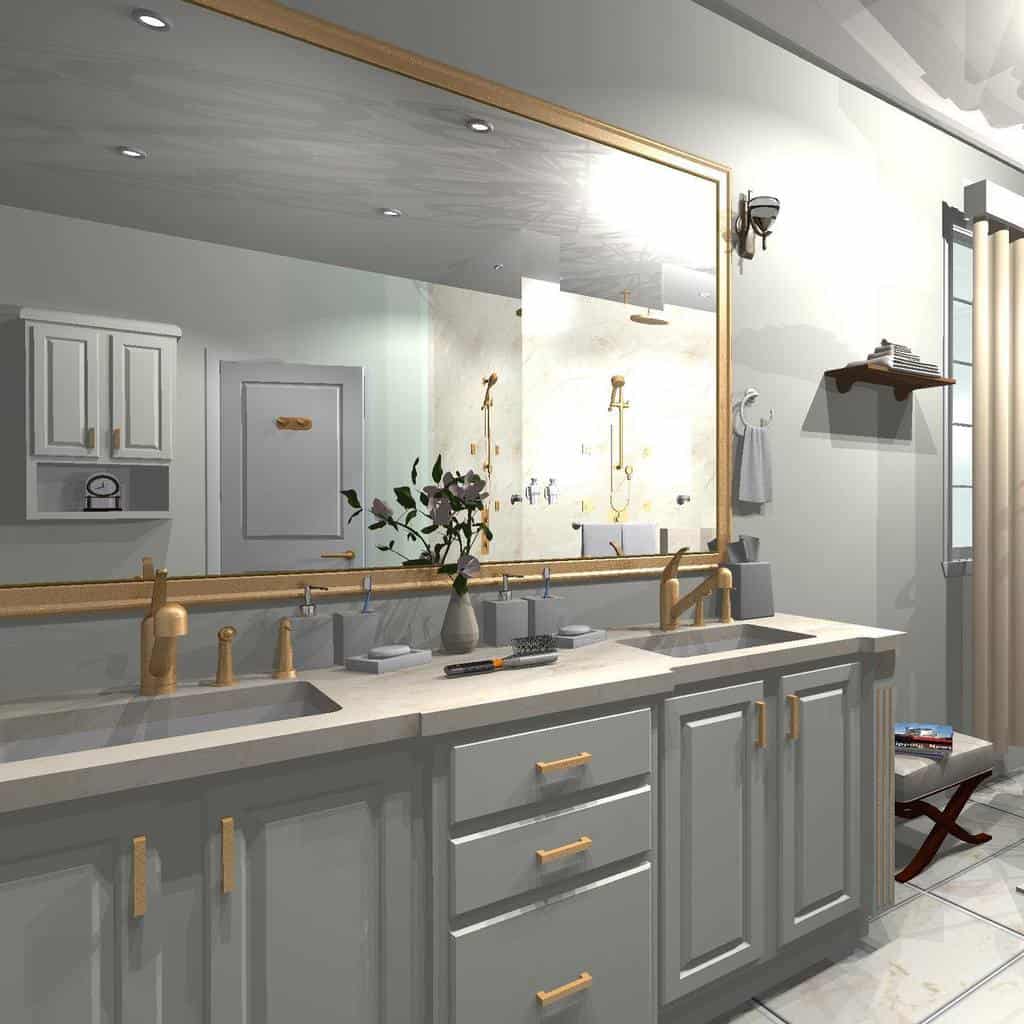
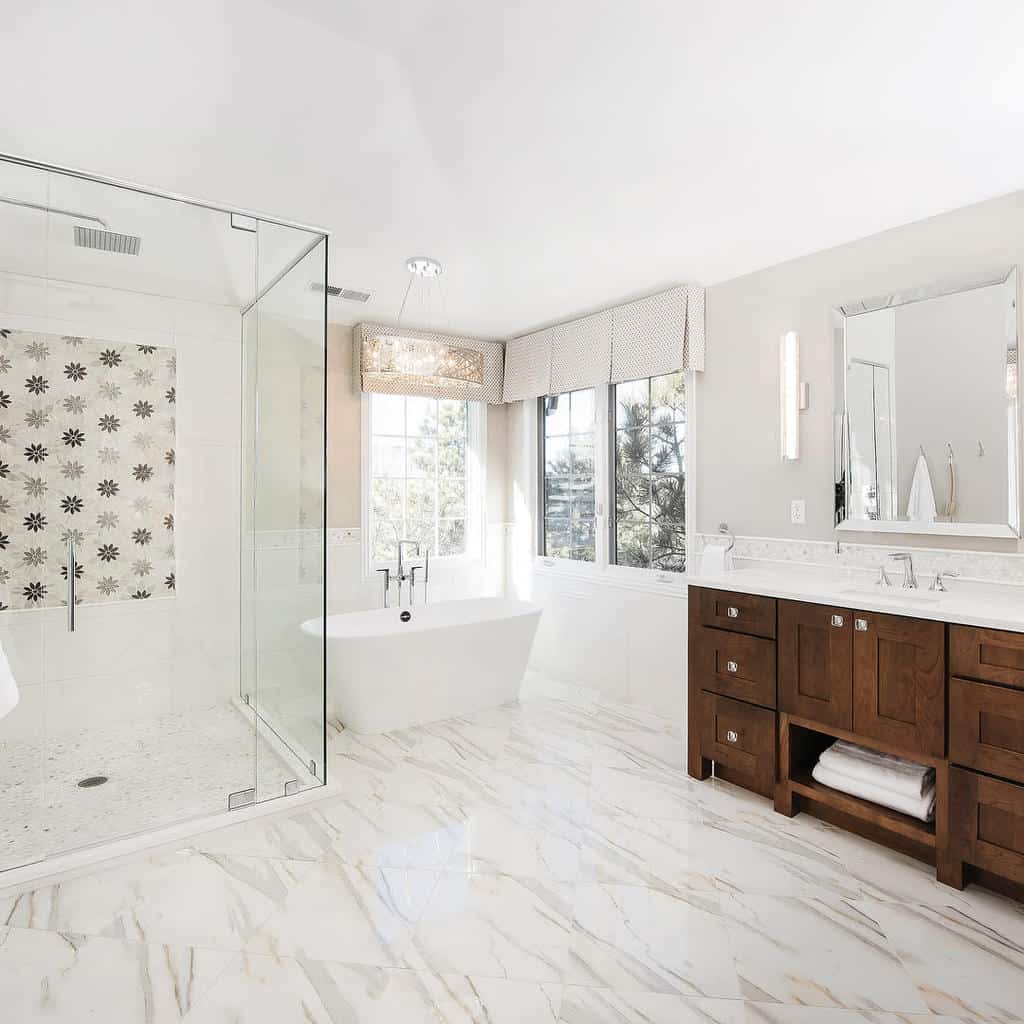
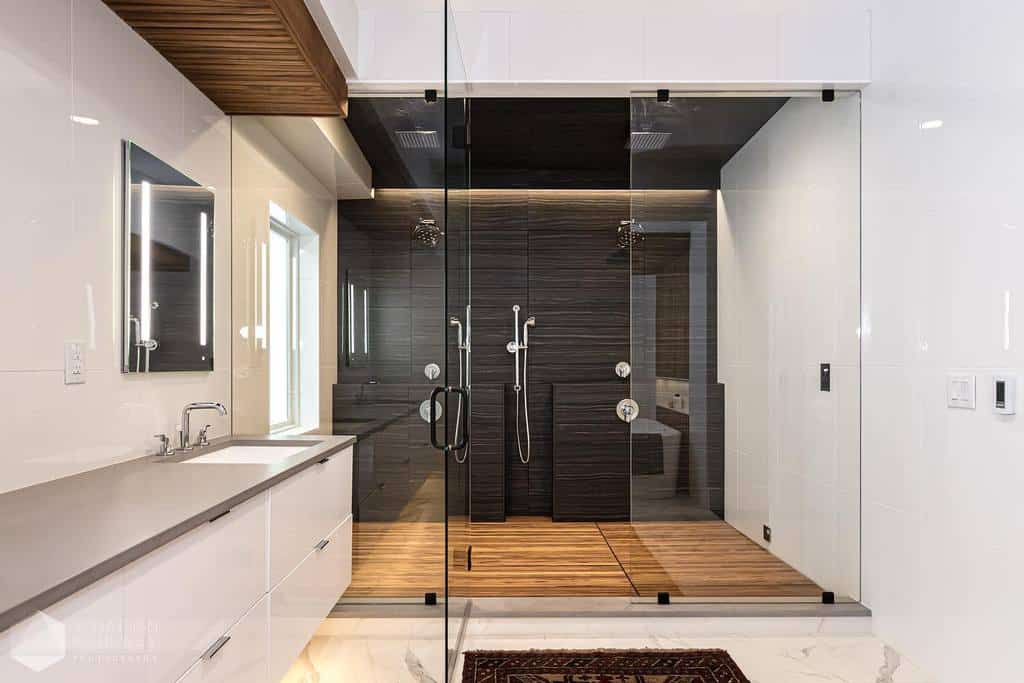
2. Bedroom Inspirations
The essence of simplicity and elegance is noteworthy throughout a bedroom with a transitional design style. Express your creativity with subtle pops of colors, but an overall soft color scheme is essential. Use shades of blues, greens, or grays as accent colors. They’ll work well within the bedroom.
Upon entering the bedroom, the bed is typically the first area your eye focuses on. Set the tone of a soft, comfortable space with neutral linen. Cozy blankets and pillows provide a layered look by introducing a variety of colors.
Regardless of the bed’s size, you’ll want to find a quality frame or stand to display it. You can easily integrate texture through the bed with the right fabrics or patterns. You can even channel your inner interior designer skills and create your own DIY tufted headboard if you are up for the challenge! Another practical piece to consider is a bench at the foot of the bed.
Play into the modern design further by using metal finishes such as copper, bronze, or gold. These elements are easy to find through lighting and decor accessories. A few bold pieces, such as oversized mirrors and artwork, are also perfect additions.
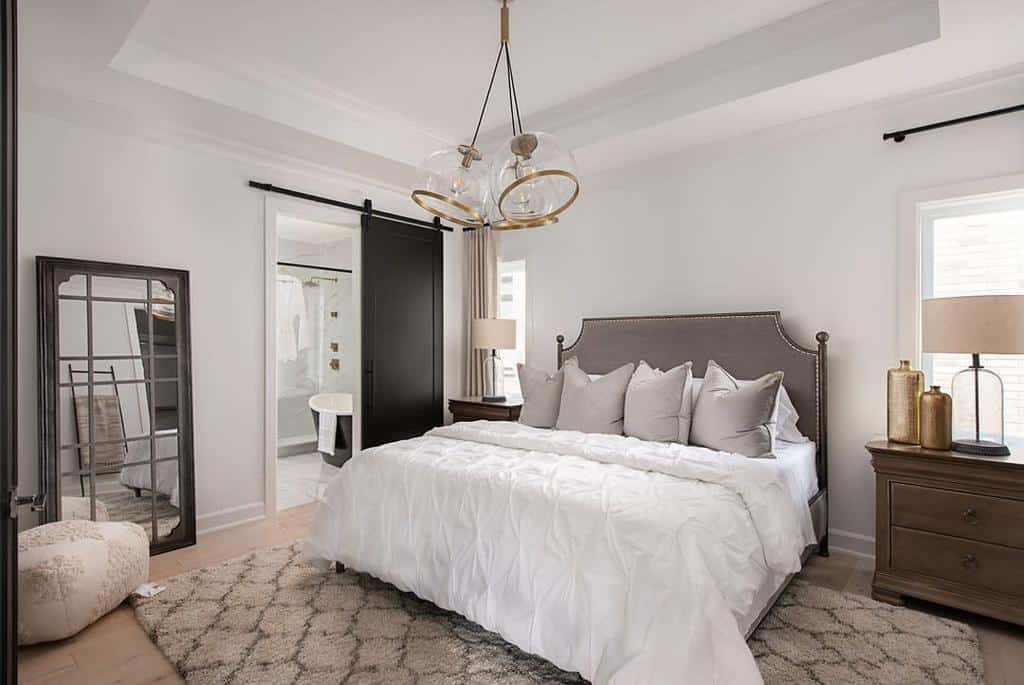
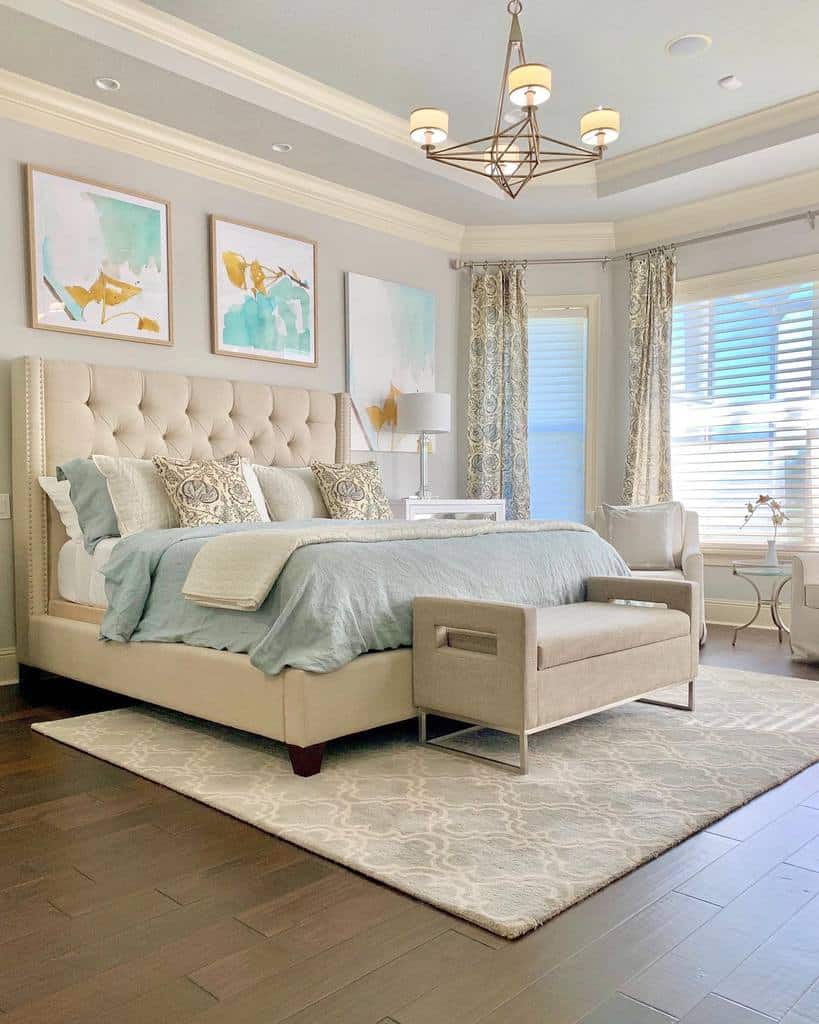
3. Elevate Your Decor
A minimalist approach is not completely necessary for achieving a transitional style, but you’ll want to be selective with the decor choices. In most cases, a single unique decorative piece serves better than many small accessories. The goal is to avoid overwhelming the eye.
Bring your space to life with the addition of greenery. Plants are a great way to add beauty and character to any room. Don’t have a green thumb? Faux plants and artificial flowers can provide the same visual benefit minus the tricky maintenance.
Highlight a room with traditional statement furniture such as a dresser, mirror, or tables. Simple accents such as throw pillows, blankets, and candles will soften a room’s appearance and create a cozy, inviting vibe.
Accentuate the ornate details found within your home. Crown molding and wood features provide a modern aesthetic without foregoing your home’s traditional details. Further, play into the contemporary design with the blend of textures and fabrics.
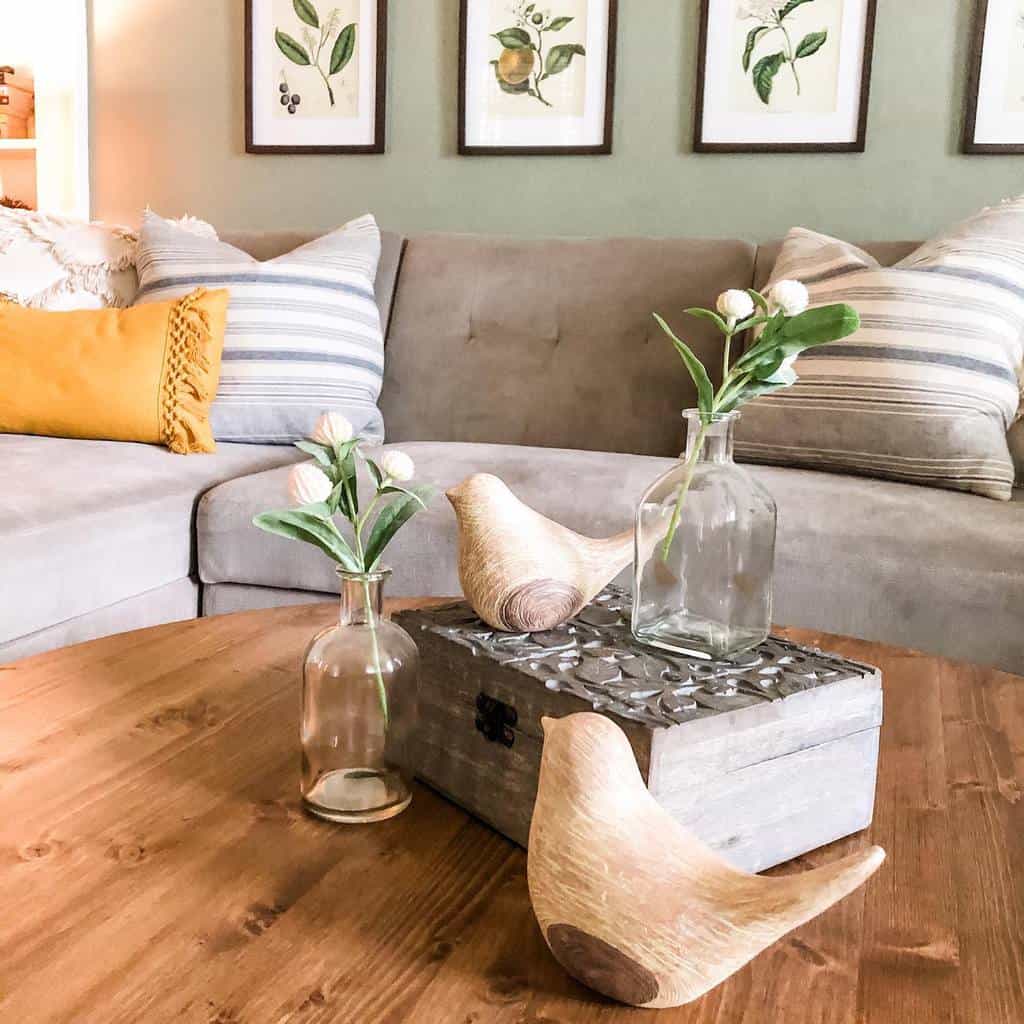

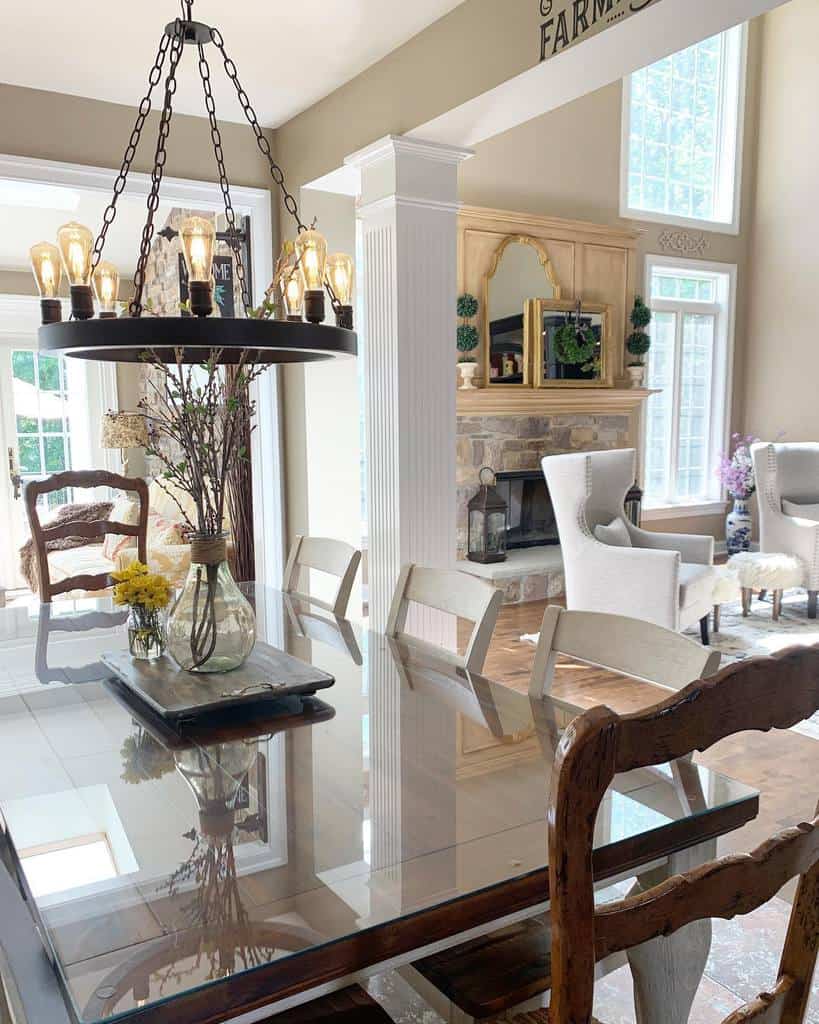

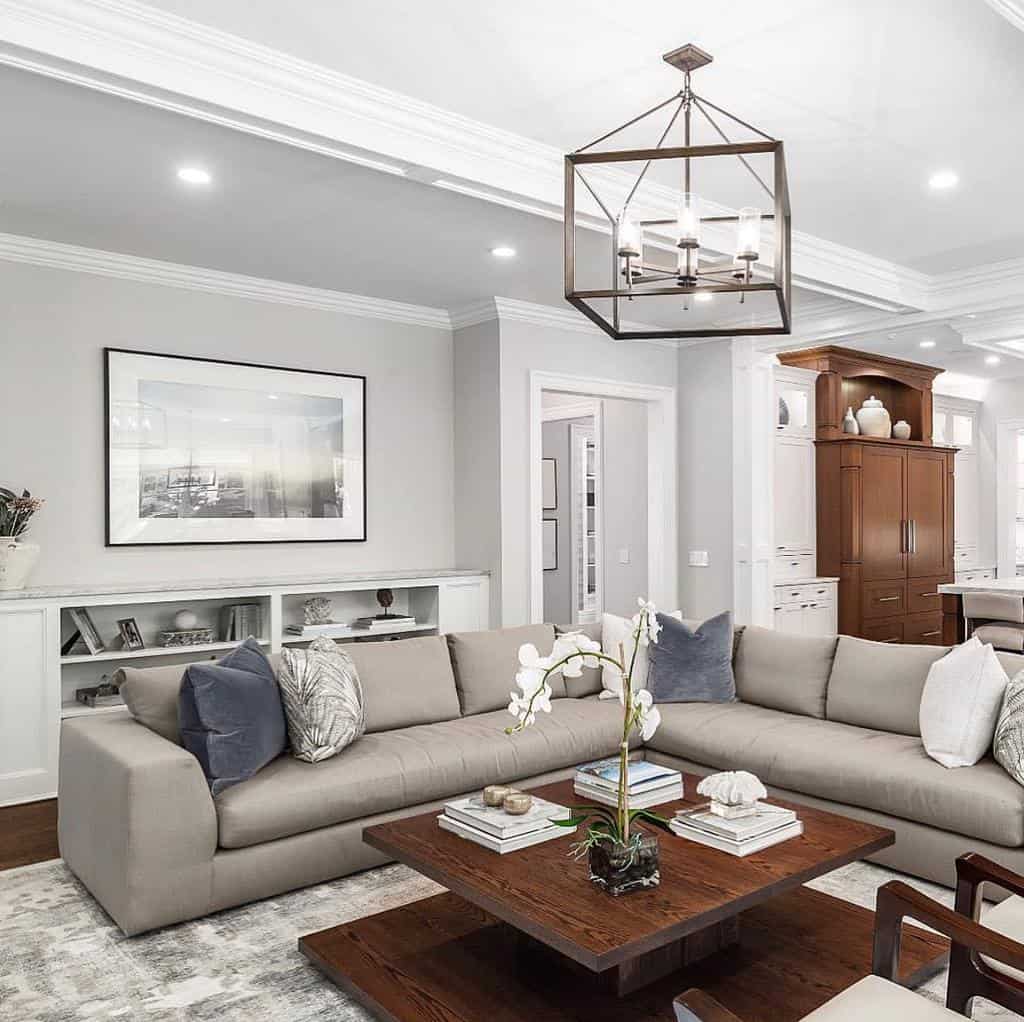



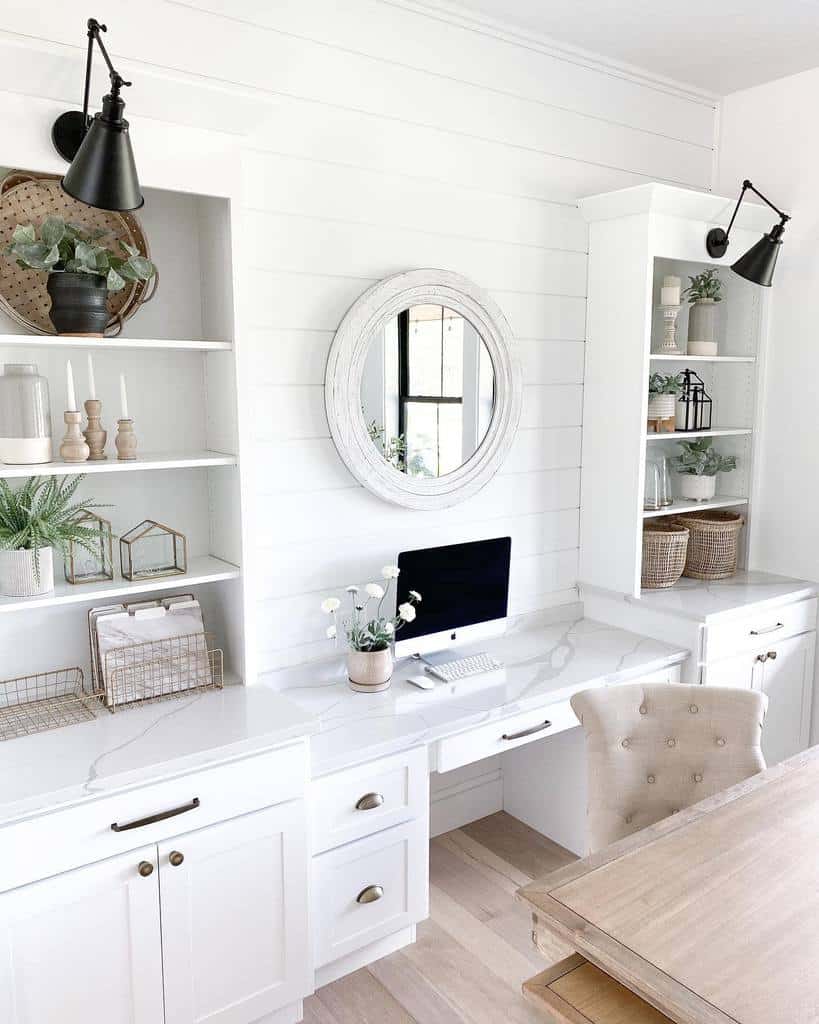
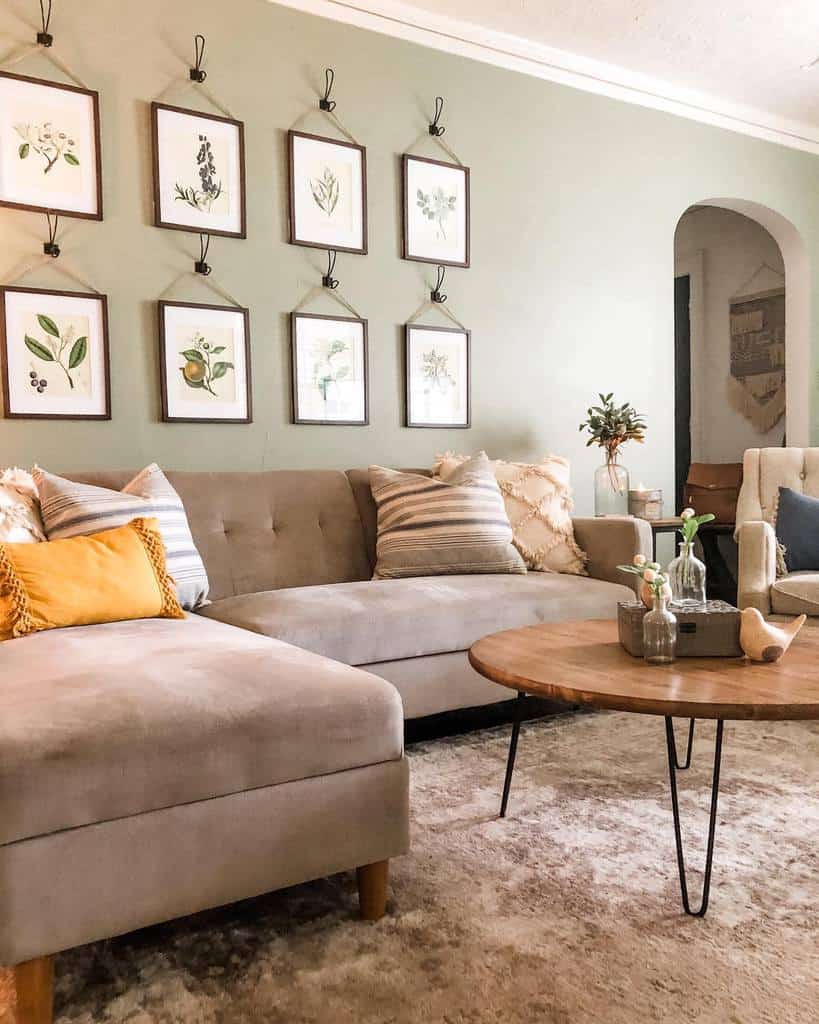
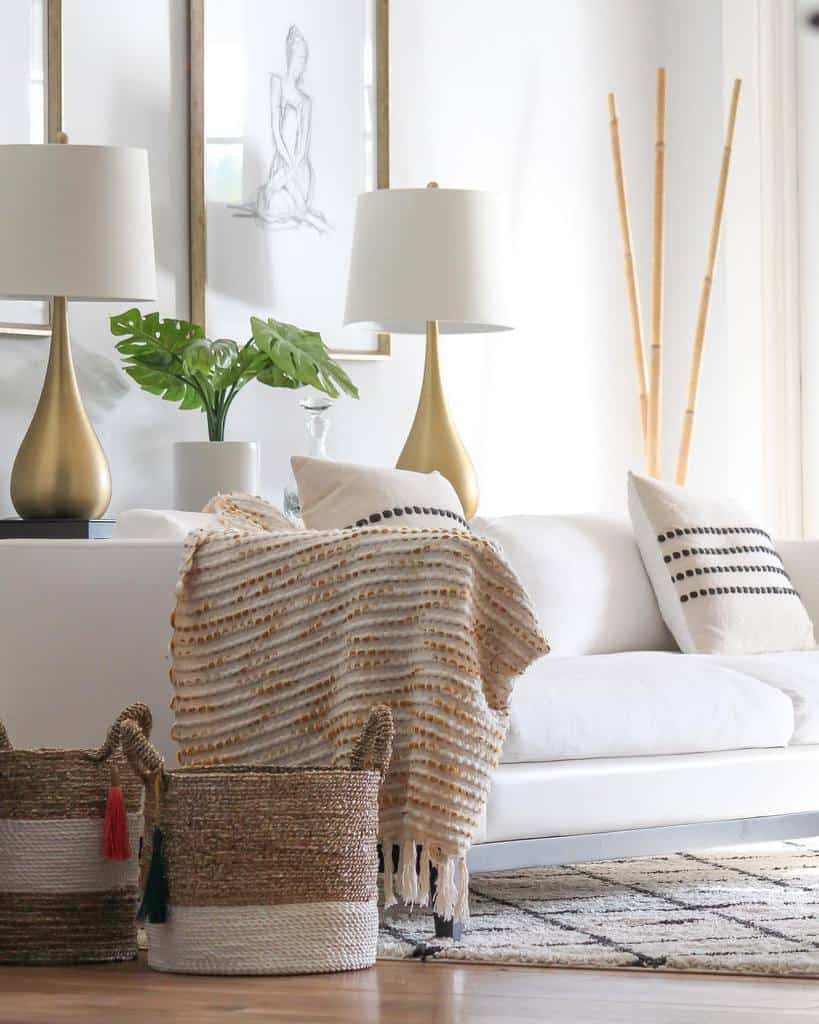
4. Dining Room Evolution
Carry the transitional style over into your dining room. The neutral palette will be a key component of the design. Utilize similar accent colors that you can find throughout the rest of the home to ensure your spaces flow together.
A substantial dining room table will be a fundamental element of the room. Having a large foundation piece will provide ample seating and is great for entertaining. Traditionally neutral-toned upholstered chairs are aesthetically pleasing to the eye, however, mixing furniture styles can also work particularly well.
Offset the traditional furnishings with an elegant chandelier or modern light fixture. Keep the decor in this room to a minimum and choose accessories that add interest rather than overwhelm your dining room. Items can range from an accent chest or grand buffet to even a large framed painting or mirror to add the perfect touch. The combination of curved and straight lines will further enhance the embellishments to achieve a truly transitional design.
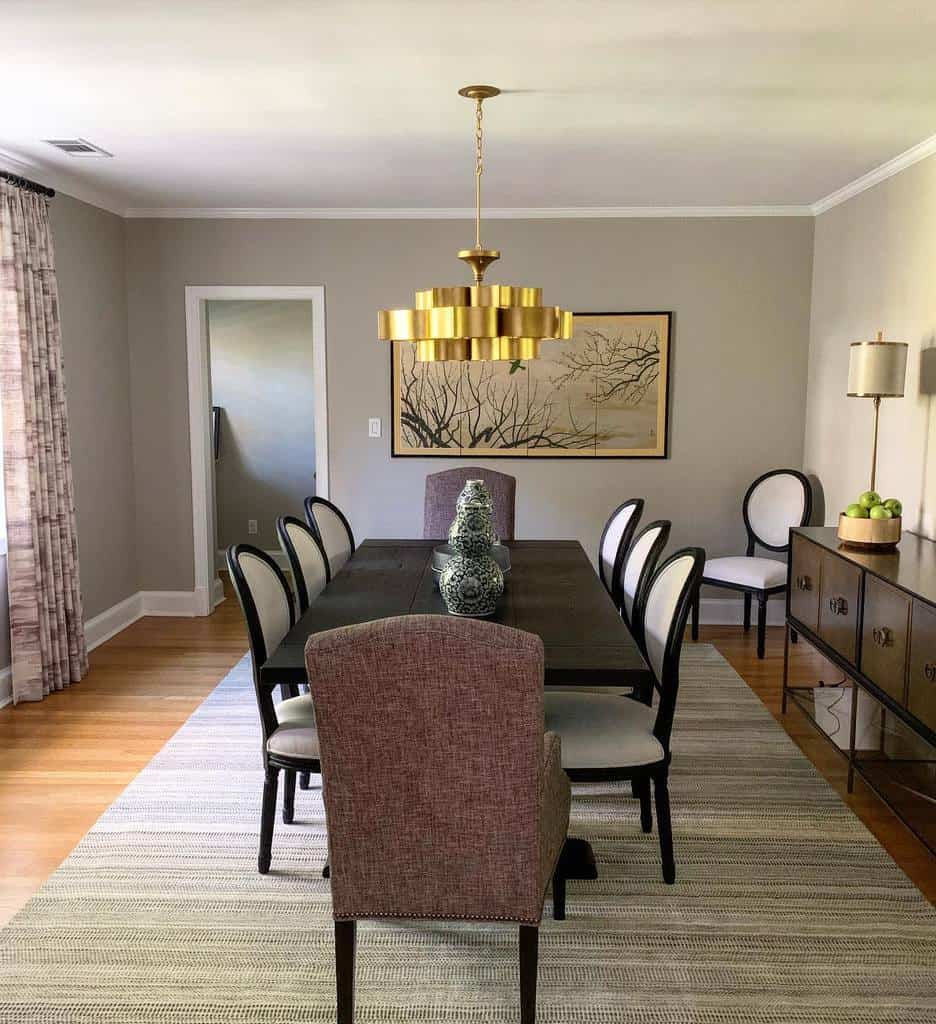
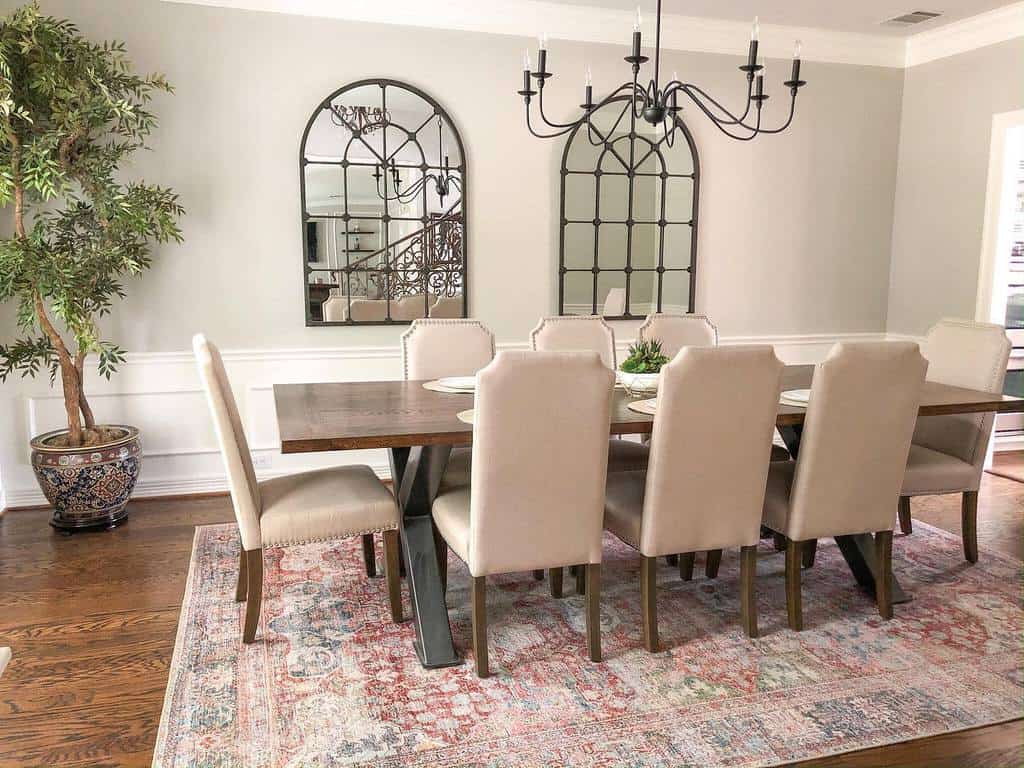
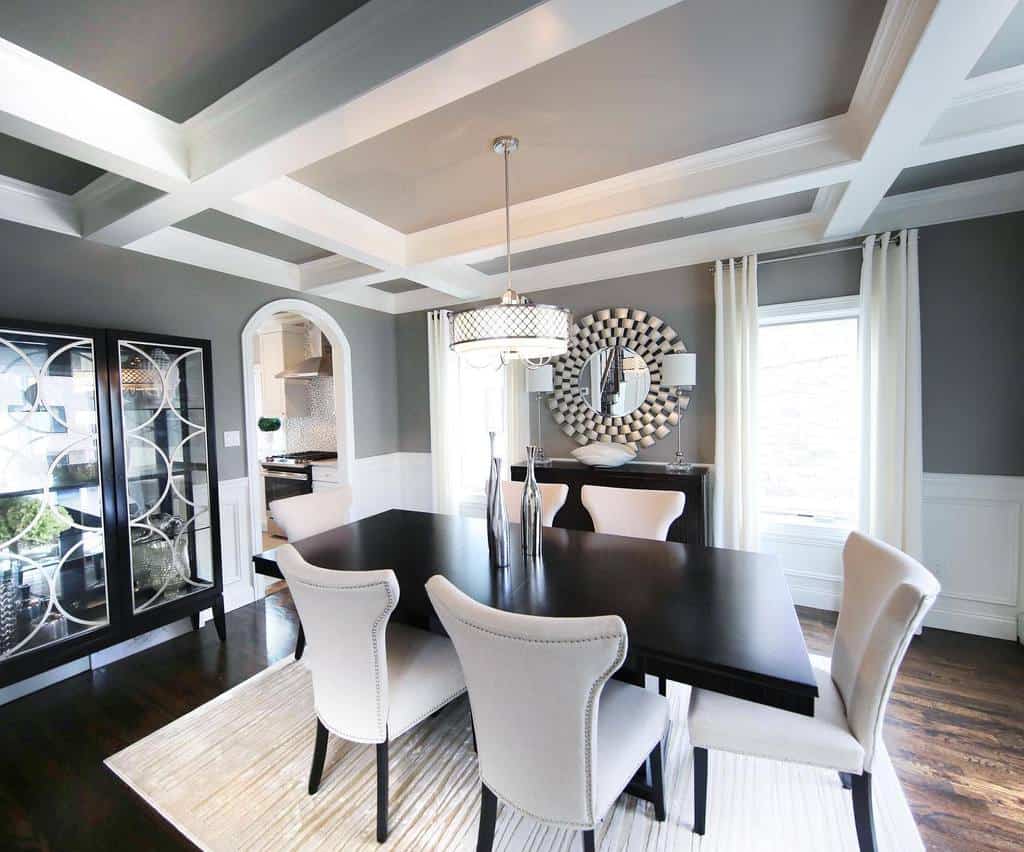

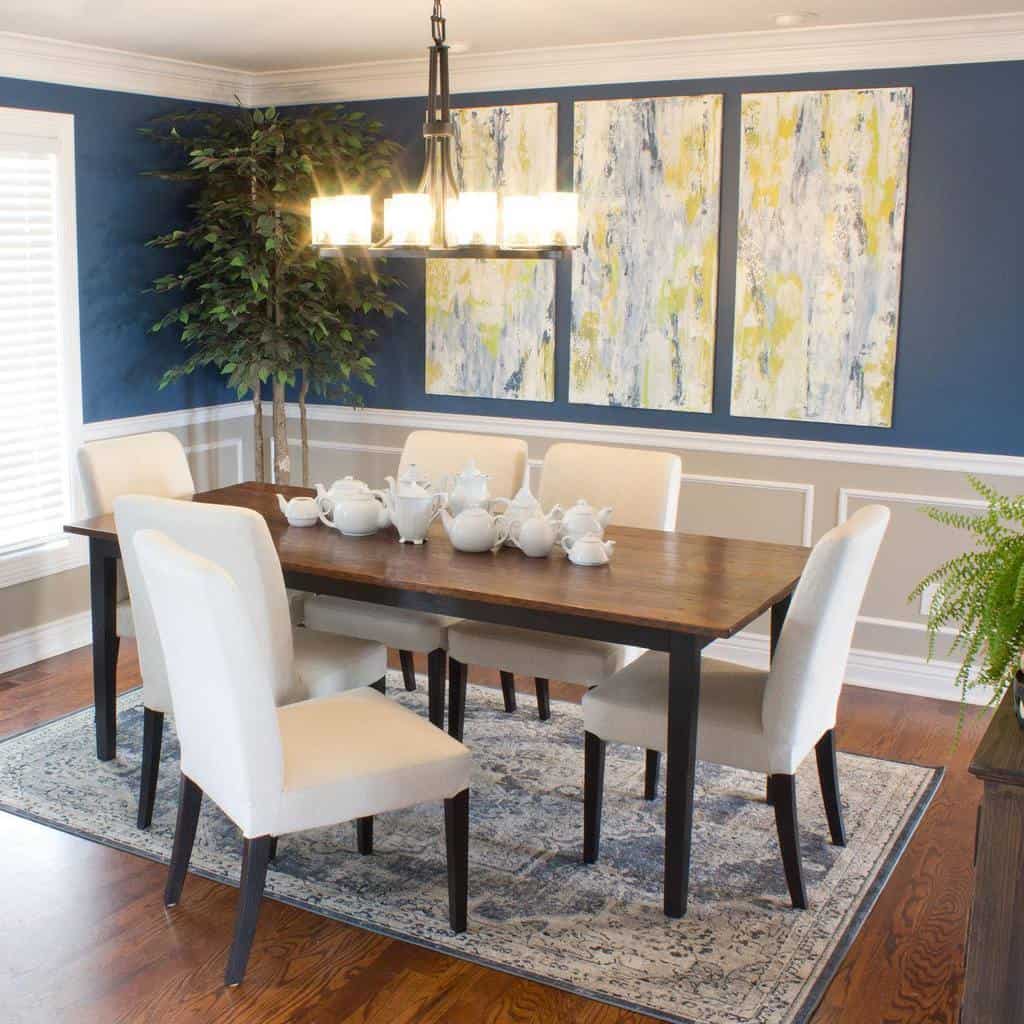

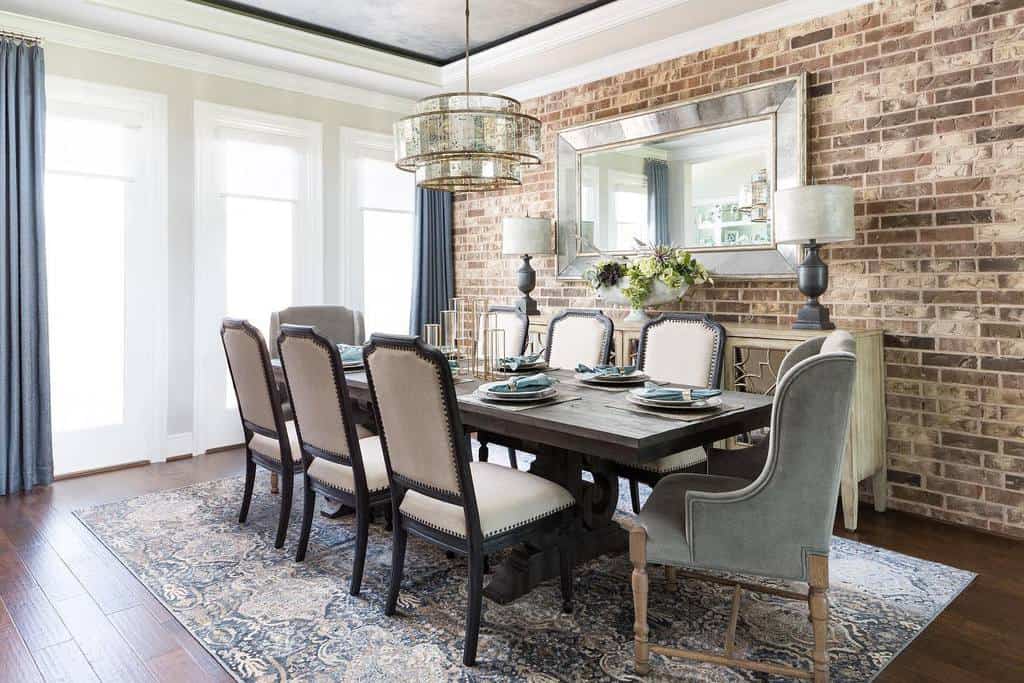
5. Kitchen Innovations
Sleek, clean lines meet with the comfort of a traditional style to make for an inviting and modern kitchen. Enhance your space seamlessly with the addition of white shaker-style cabinets. Steer clear from any intricate carvings or details on the cabinetry, as they can take away from the transitional design.
Wood tones instantly soften up the bright notes of your kitchen space. Hardwood floors are practical and durable but can be costly. Consider laminate flooring as a budget-saving alternative. Floating wood shelves are another modern accessory that doubles for further storage.
Show your personality off with a boldly colored island. Think shades of a deep midnight blue or charcoal gray to counteract the bright walls. Curved furnishings and contemporary pendant light fixtures pair perfectly to create a cohesive transitional design. Varied cookware and dishes work together without feeling too chaotic.
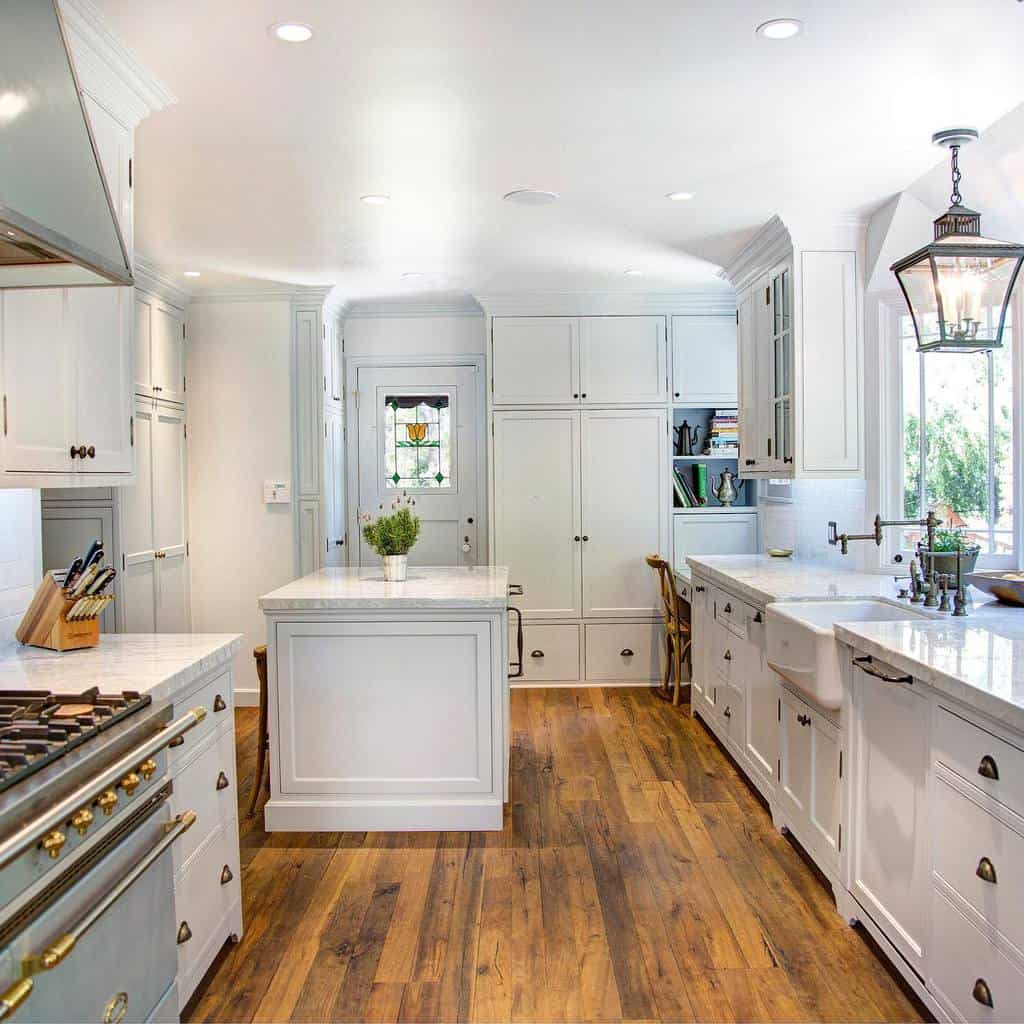

See more about - 98 Picture Wall Ideas
6. Living Room Magic
The living room serves as the central point of a home, and what better way than to set the tone with a base of cozy, warm neutrals? Take it to the next level with the introduction of bold dark hues. Whether it’s through an armchair or a patterned throw pillow, the addition of color will keep the eye moving and interested. It will also allow for your furnishings to take center stage. The goal is to create cohesion with common denominators while maintaining its traditional elegance.
Let the natural architecture of your home shine. Keep the focal pieces of the room such as fireplaces or shelving units white and bright. Opt for simple, clean window treatments in the living room. By doing so, you will allow for natural window light to brighten the neutral wall color. This will also create an overall larger feel to your space.
Display your personality through unique accessories that also work as conversation starters. Remember to keep things simple. Less is more for achieving the transitional style. The touch of wood accents is an excellent addition. Give the room an even further modern feel with various textures and fabrics such as leather and suedes.

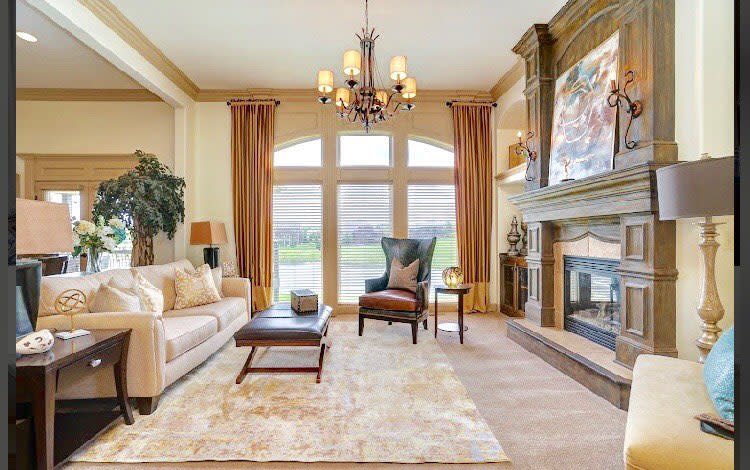

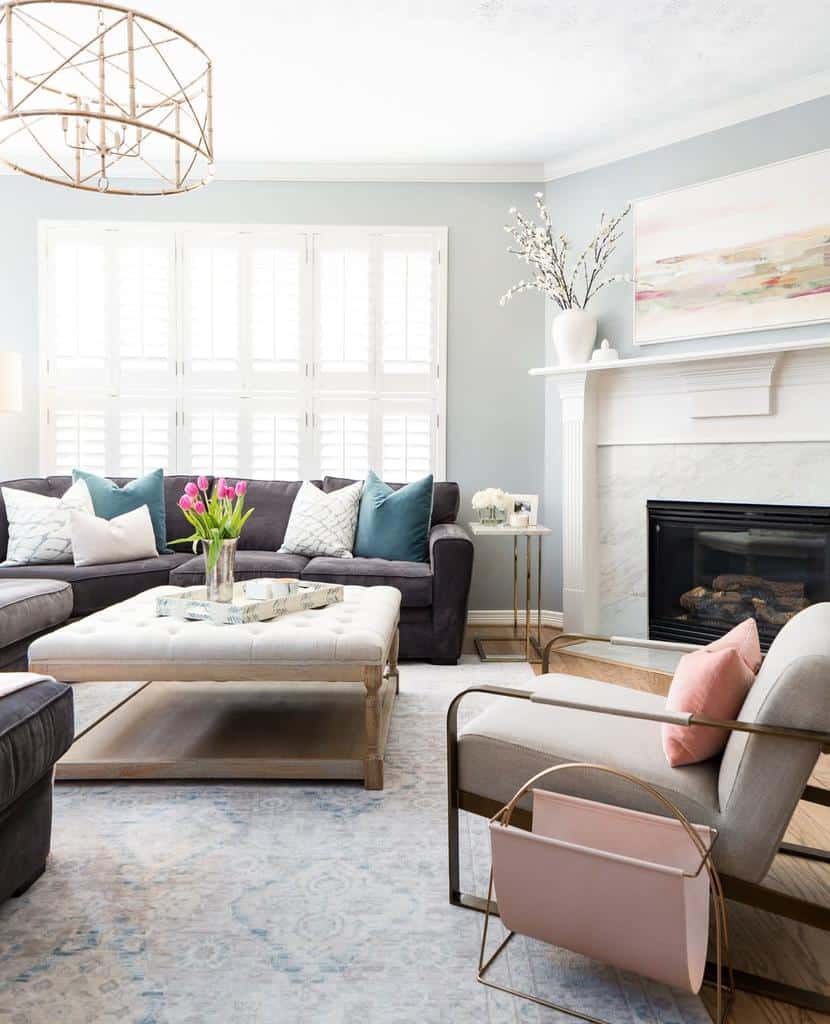


7. Traditional Furniture Elegance
The mix of contemporary and traditional allows for your creativity to shine. Large classic furniture pieces receive a modern makeover to enhance their sophistication. In a transitional room, curved and clean lines pair together to display both a masculine and feminine feel. Two-toned furniture portrays a sleek design.
Become innovative with the selection of your furniture. Transform your favorite accent chair through reupholstering to give it a new life. The addition of texture will play a leading role. Popular transitional fabrics include suede, leather, chenille, and velvet. Adding a layer of paint or detailing to a side or coffee table can provide an easy elegant upgrade.
Choose unique items throughout every room to serve as conversation starters. Whether it’s a collection of dining room chairs or a modern ottoman, each piece should be well thought through and provide a purpose within your home.
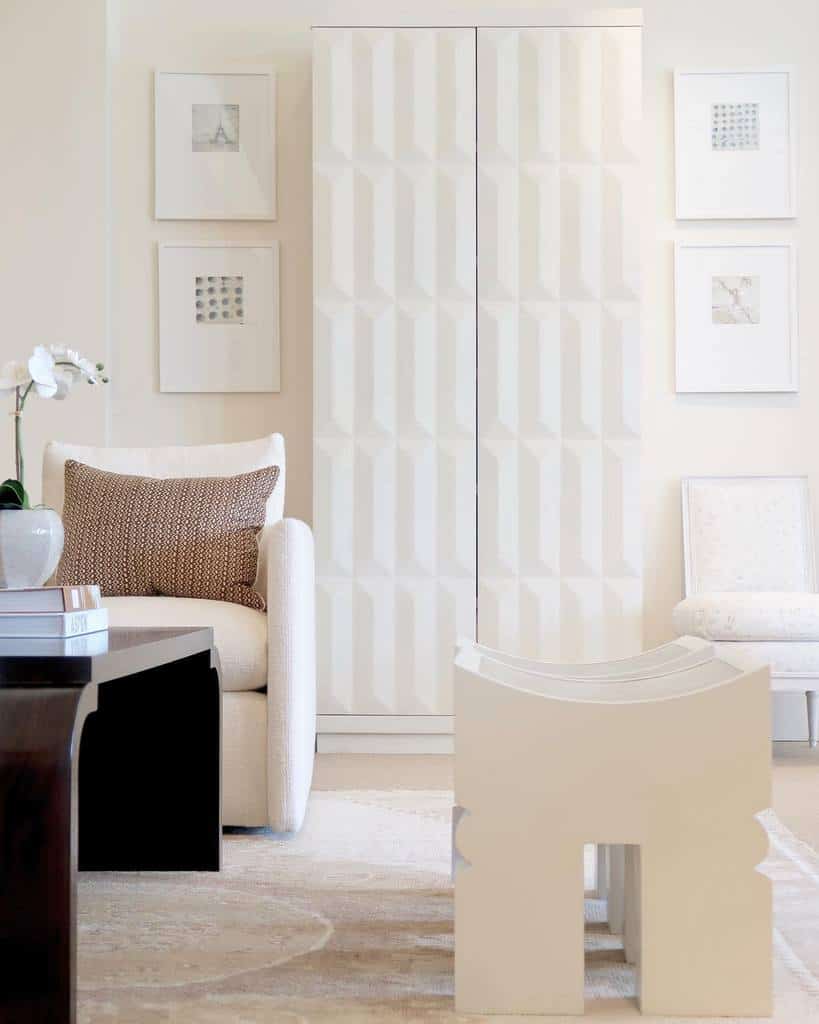
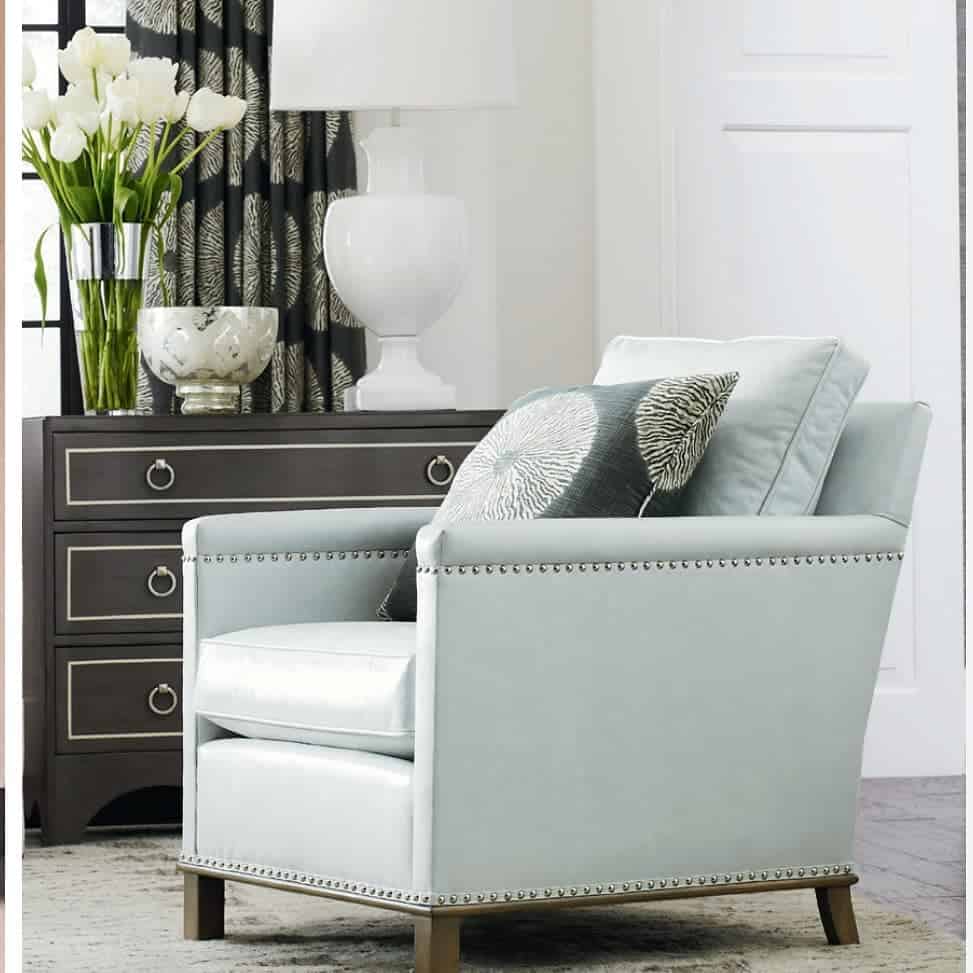
8. Thoughtful Home Transitional Design
If you favor styles from both the past and present, transitional design is right for you. Bringing in elements from two design styles can sound intimidating to balance, but the look is easier than it seems. The marriage of traditional and contemporary elements work together effortlessly, and you can display them throughout your home.
The variations of contrast are essential. Deep, bold accent colors add the necessary masculine touch to the neutral backdrop of a room. Trendy shades of blue, green, and purple are typical, but there are no limitations. Straight lines combine well with rounded furnishings to complete the overall look.
Diverse fabrics, textures, and metallic accents enhance the modern feel. Keep your decor on the simpler side and focus on choosing quality statement items over quantity. The mesh of designs allows for a completely customizable space that’s sure to leave a lasting impression on all of your guests.
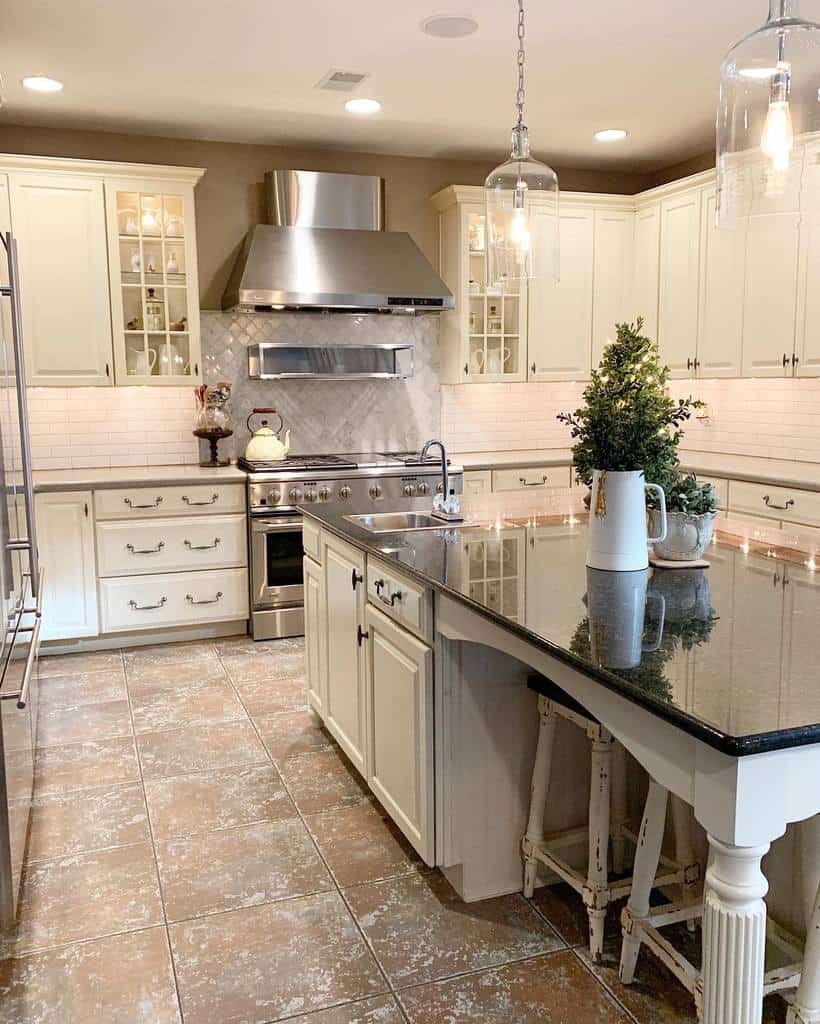
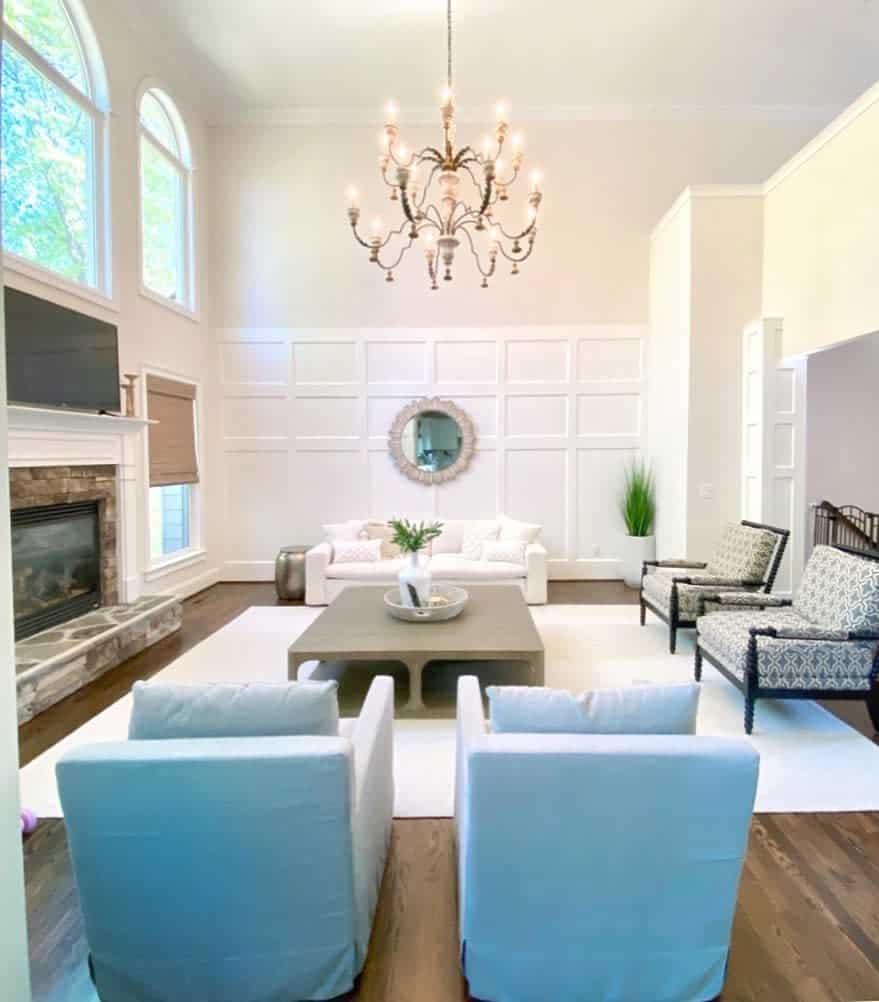
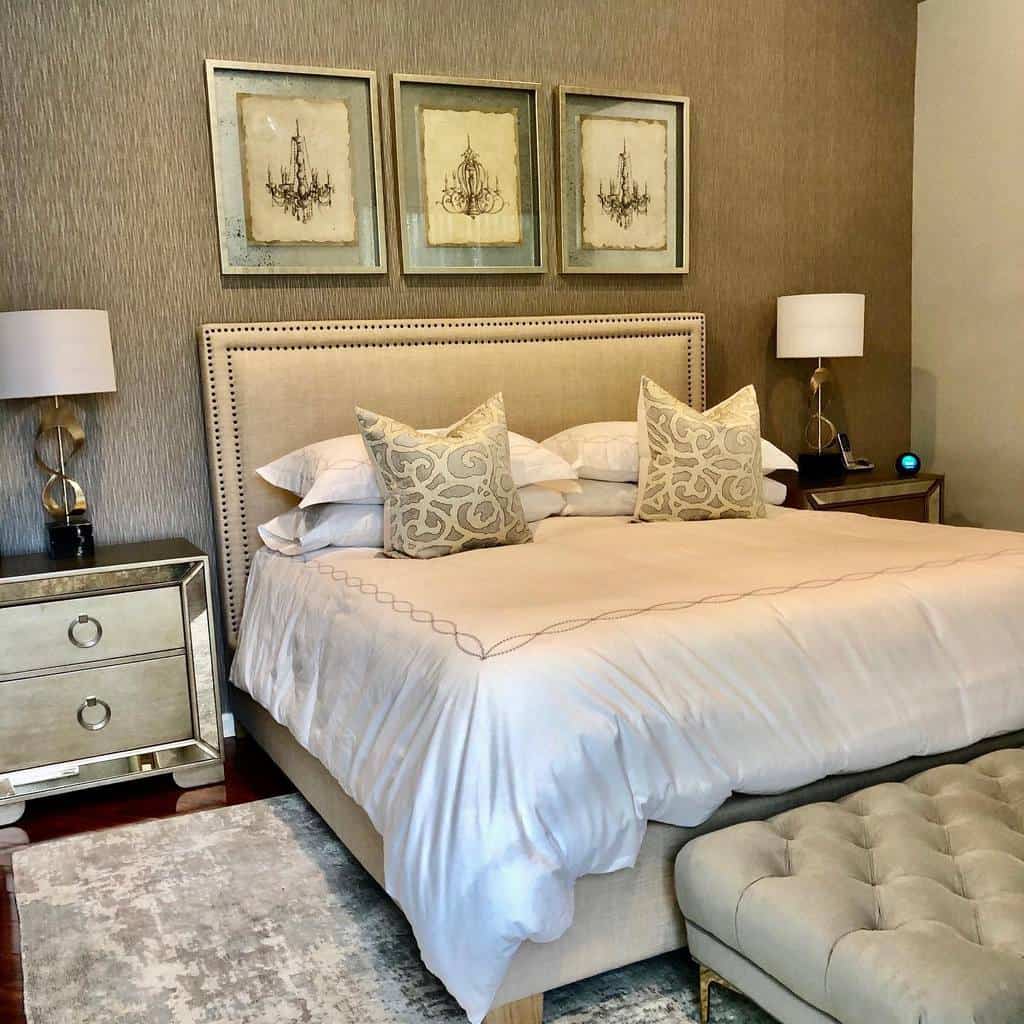
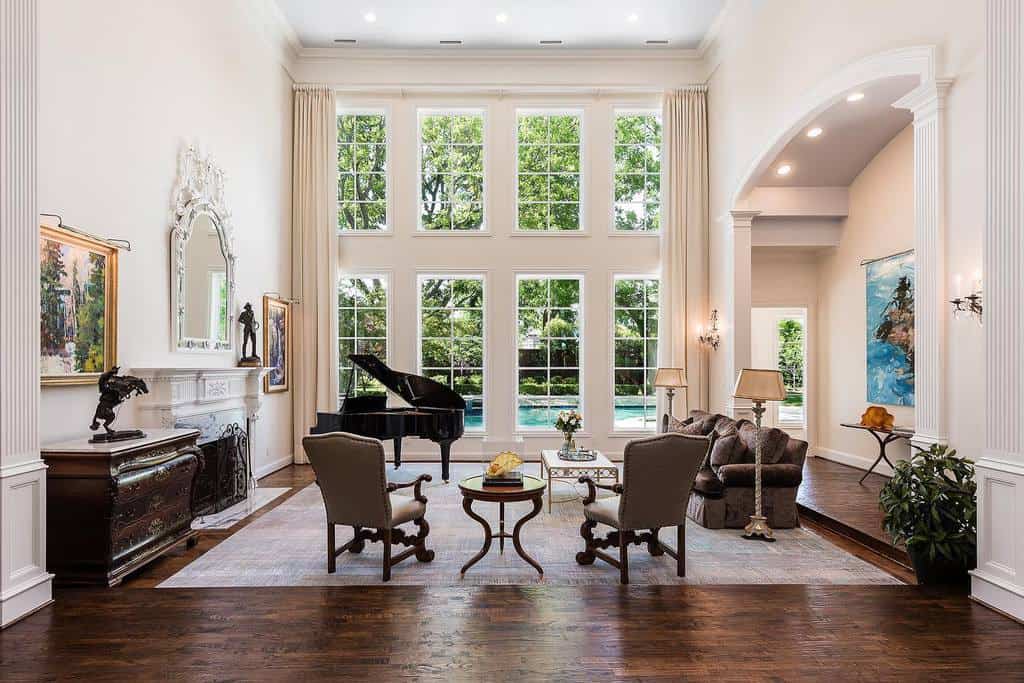
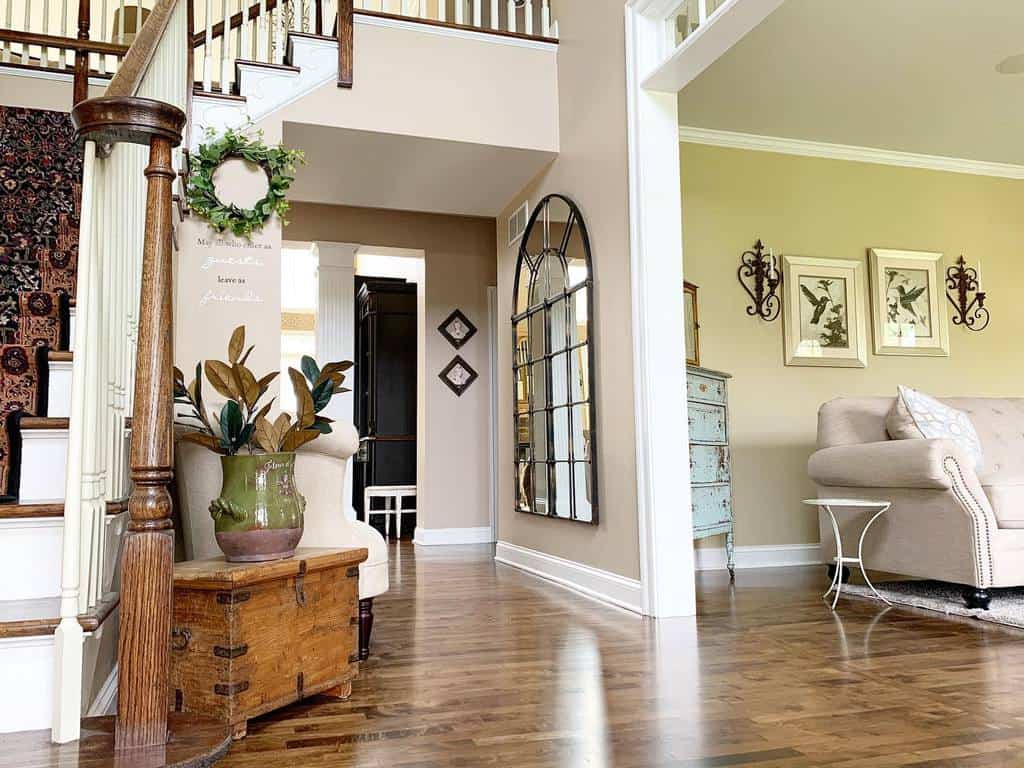

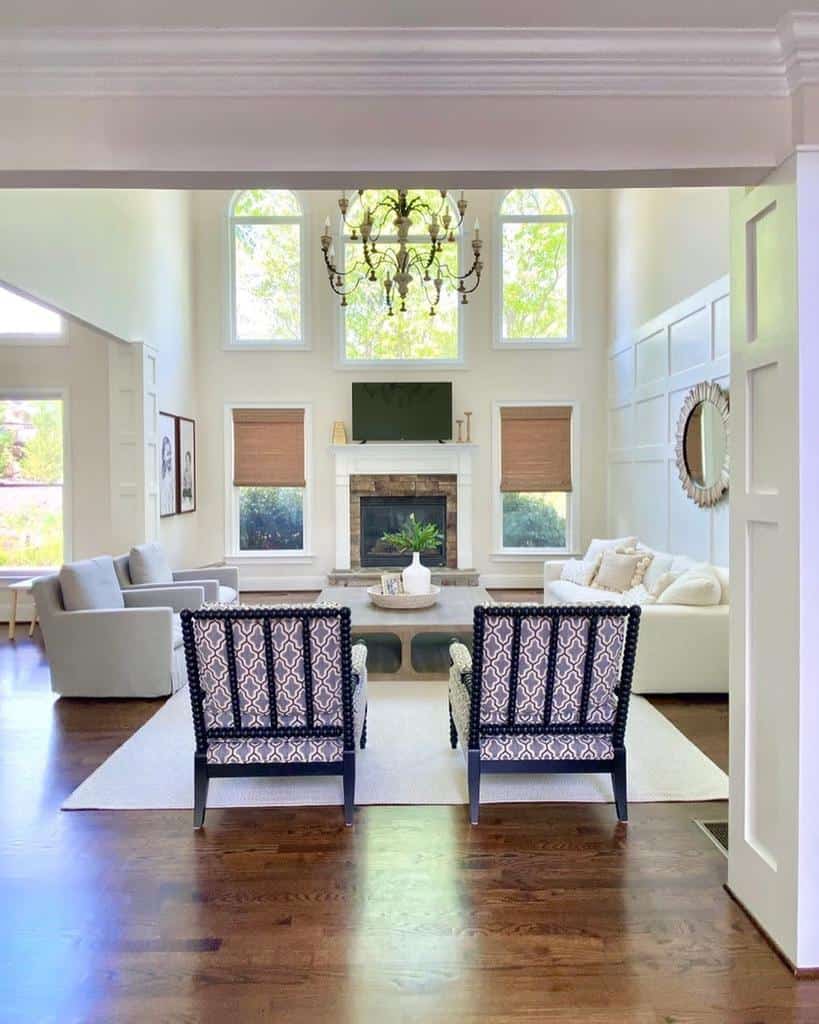

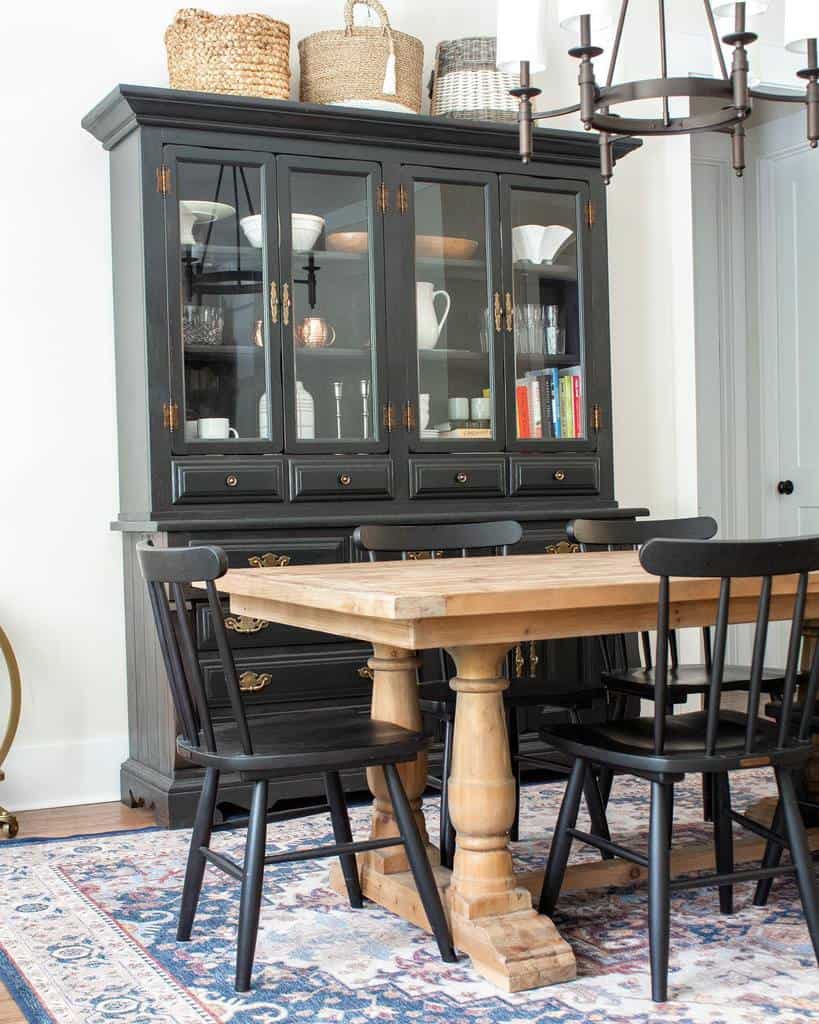
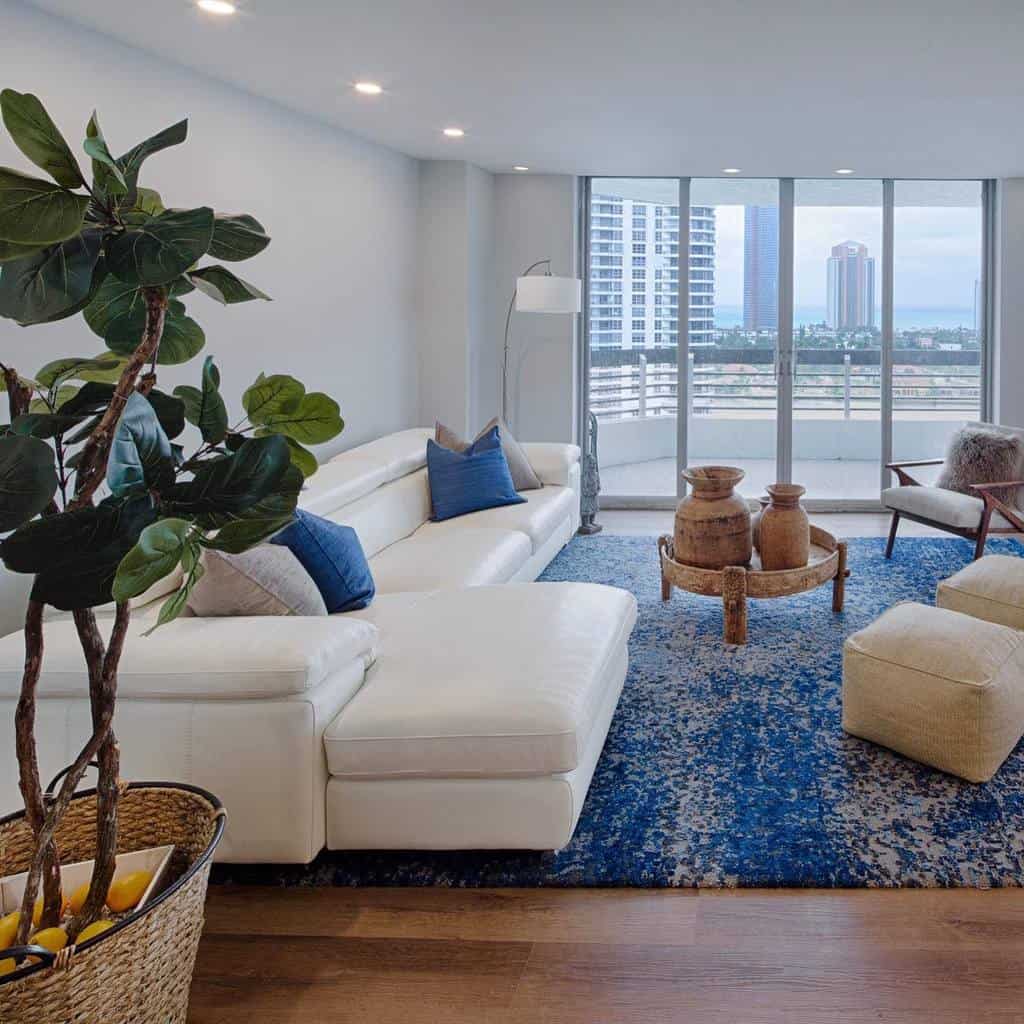
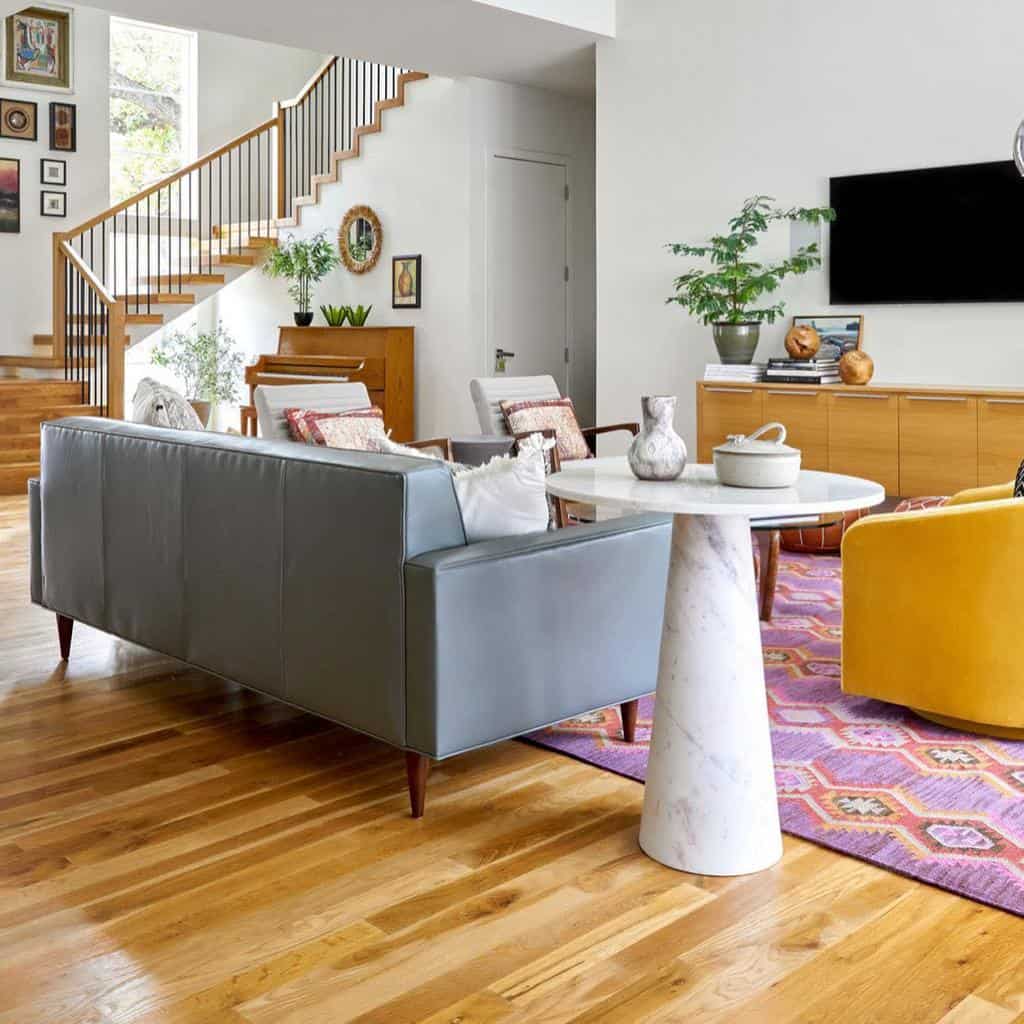
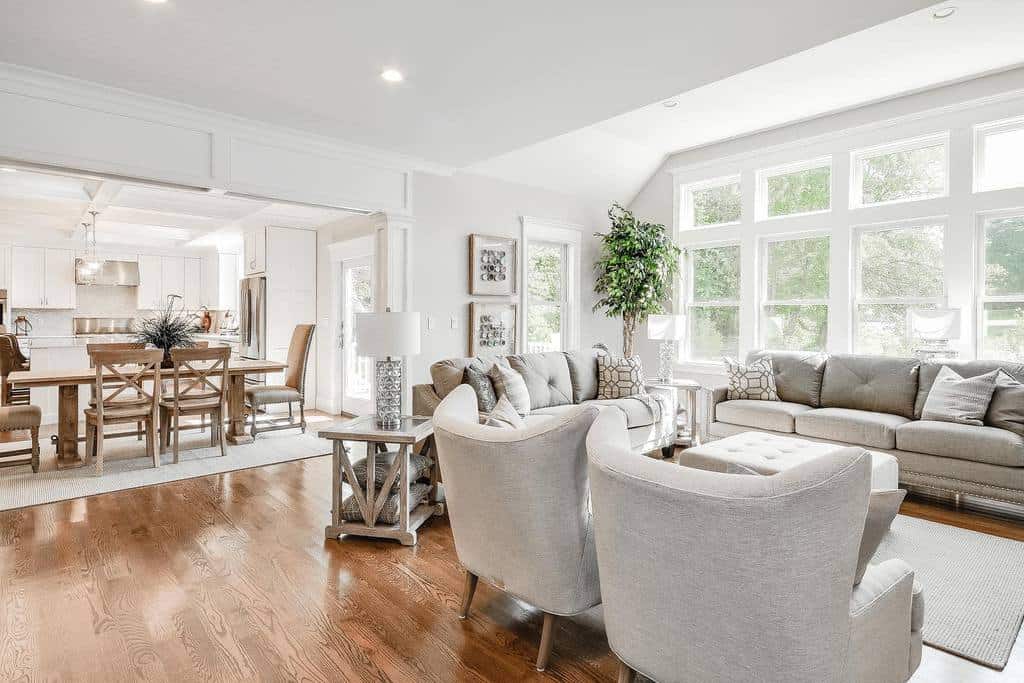
9. Interior Brilliance
Have you caught onto the recurring color schemes of a transitional design yet? Painting the base foundation of your home in muted hues has many benefits. Trends can shift between warm and cool tones and colors often, so maintaining a soft base will allow for a smoother remodeling transition. A calm serene background also allows for your furnishings to be the star.
You’ll also want to be mindful of the flow of colors between each room. The splash of color adds a playful touch, but maintaining a harmonious transition is equally important. Variations of a chosen accent color throughout the home are a great way to add depth and diversity to each room. Incorporate bold animal prints or textured fabrics for a more unique modern twist.
Lighting has a tremendous impact on a room. A dramatic chandelier or modern light fixture will make for an irresistible element that is sure to not go unnoticed.
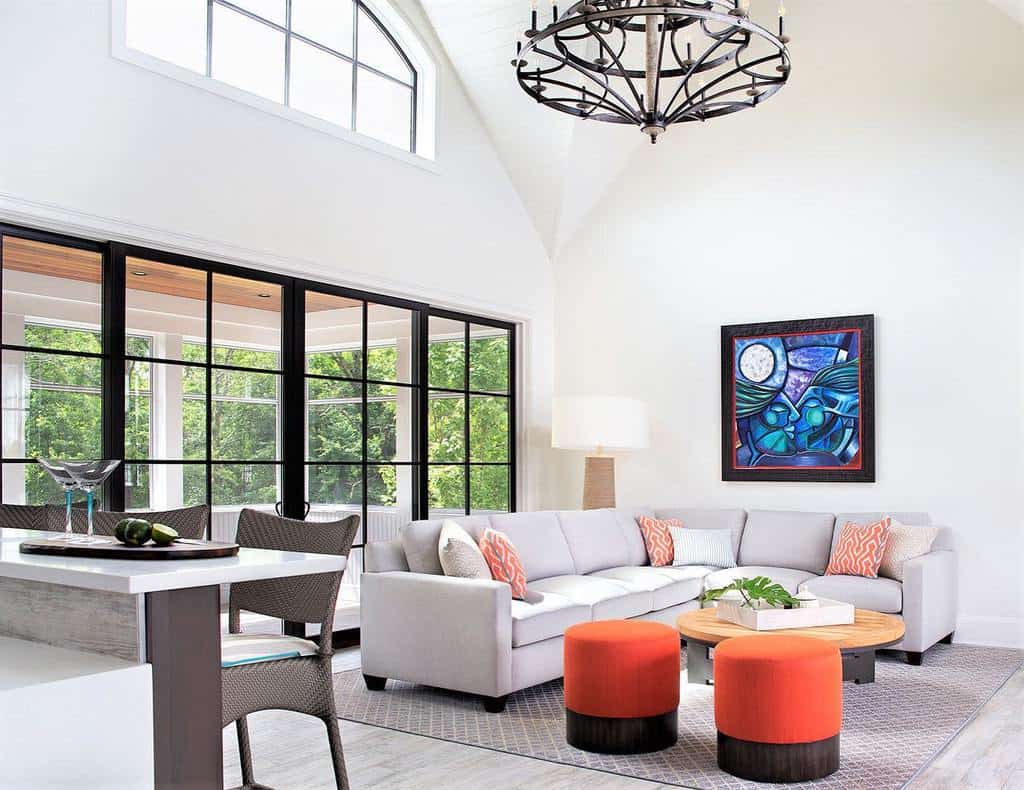
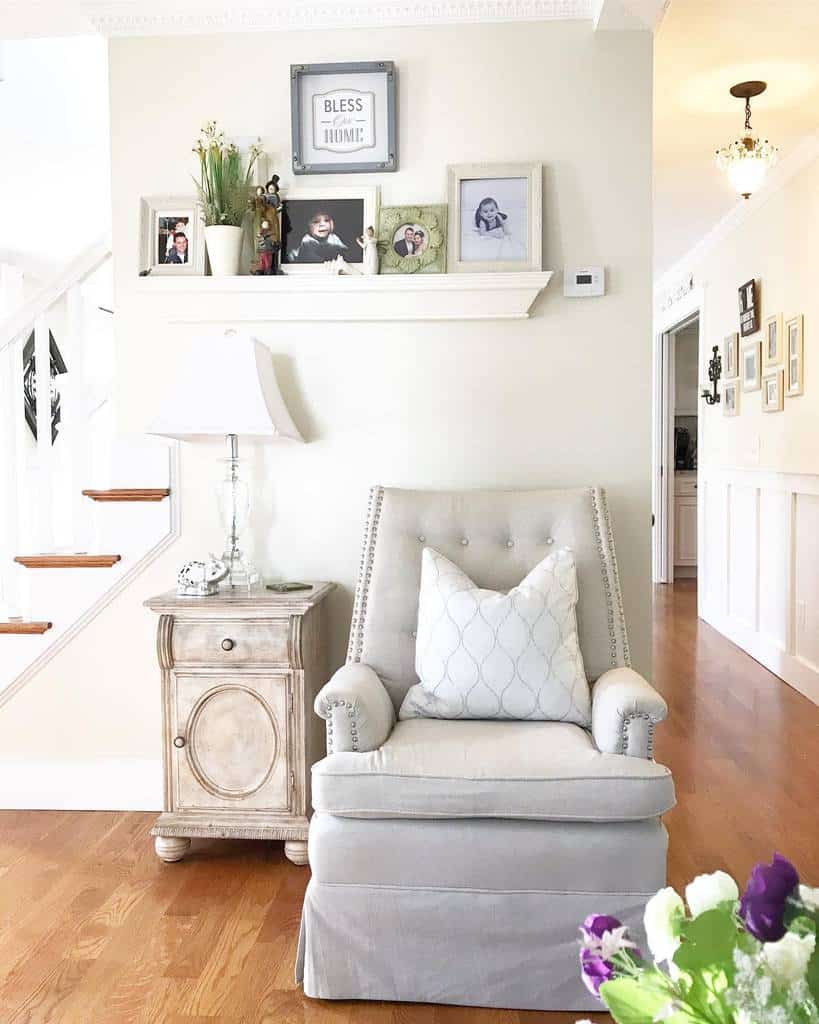

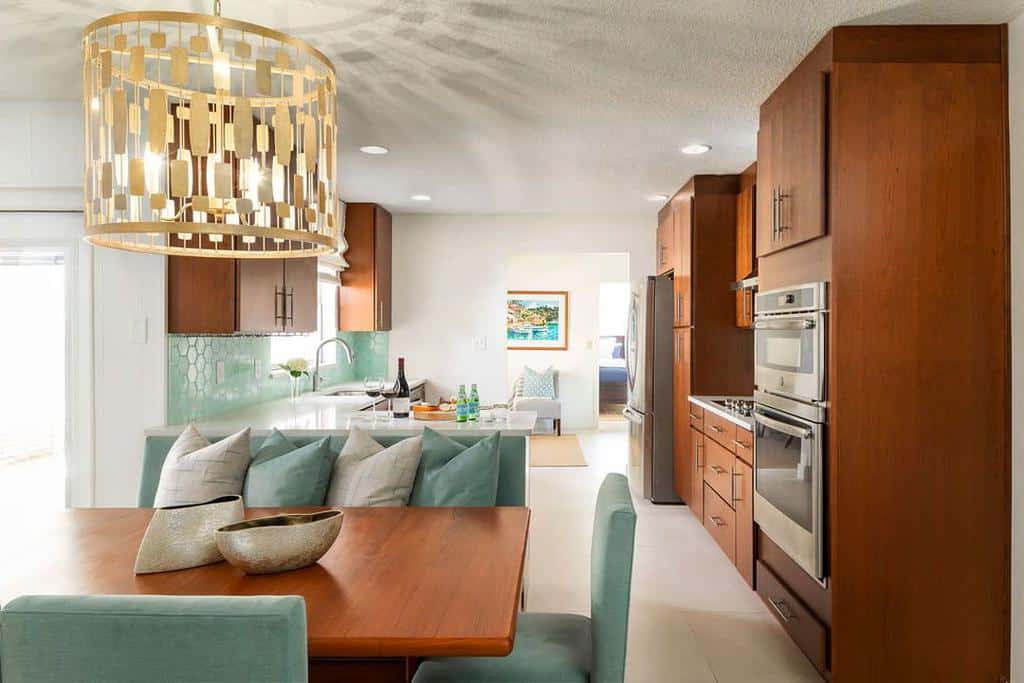
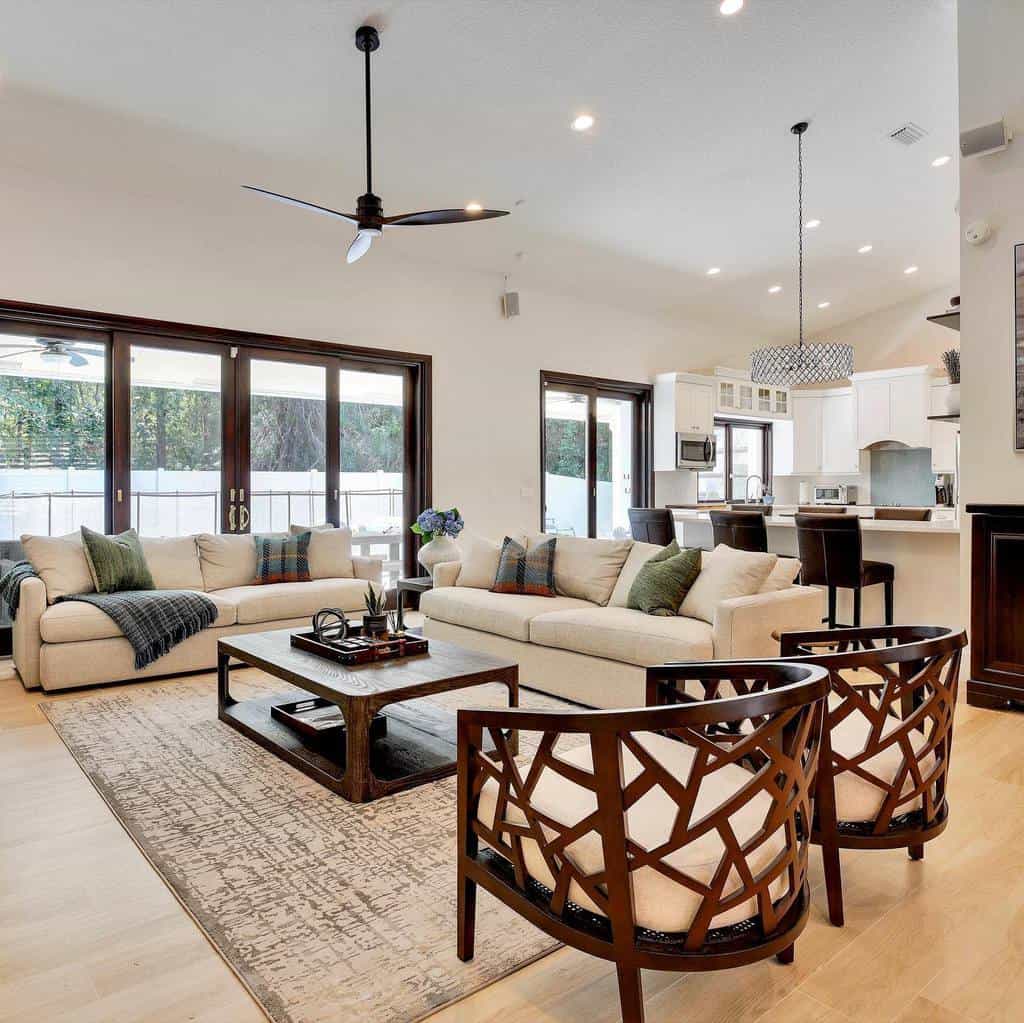
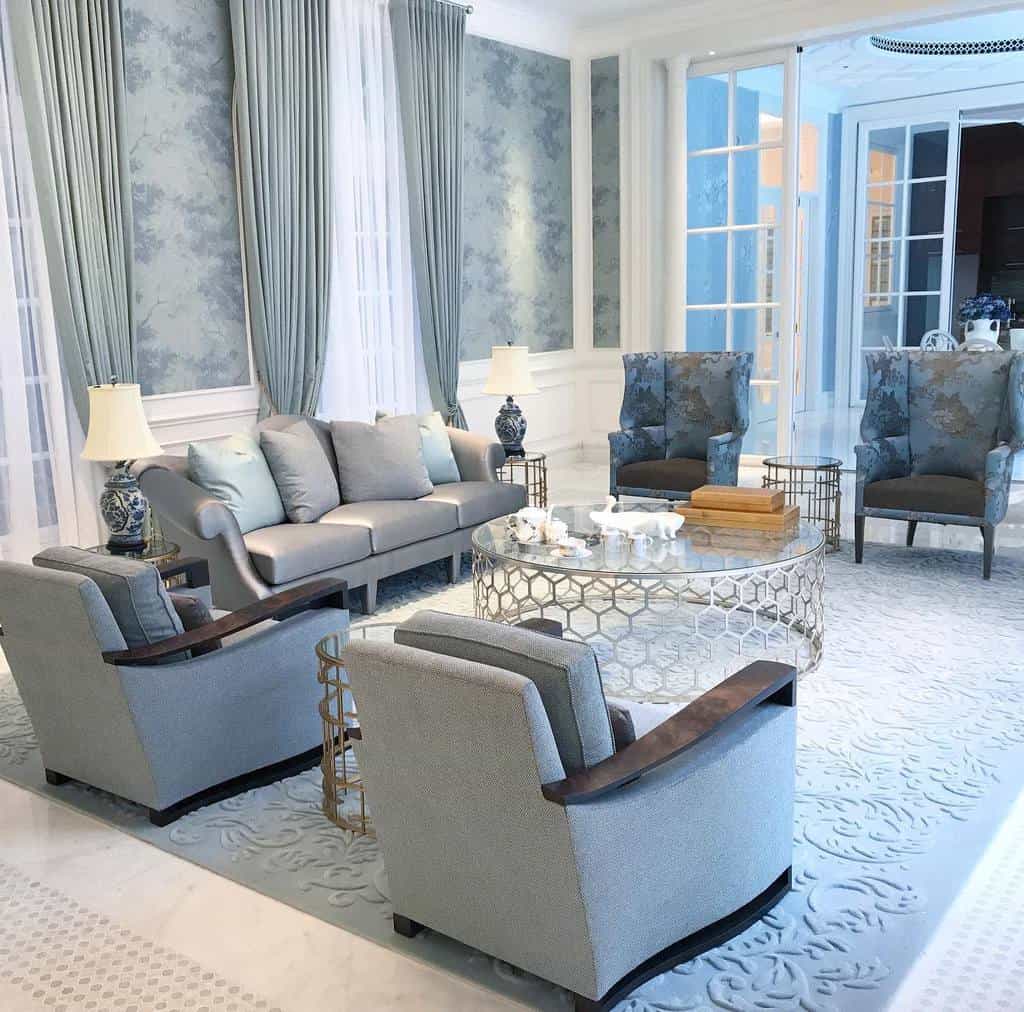
10. Rugs that Tie Spaces Together
Add a sense of cozy comfort to any room in your home with the addition of an area rug. The combination of traditional and modern patterns makes for a very versatile and flexible style. The blend of designs pairs effortlessly with decor styles ranging from classic to chic. Taking inspiration from traditional rugs, a transitional rug displays a repetitive pattern falling into categories such as geometric or tribal.
It’s better to choose rugs with underlying neutral tones and a subtle contrast of color to complement a room’s design style. Size is also a factor to consider when selecting an area rug. For smaller spaces of the home, opt for a round or runner-style rug.
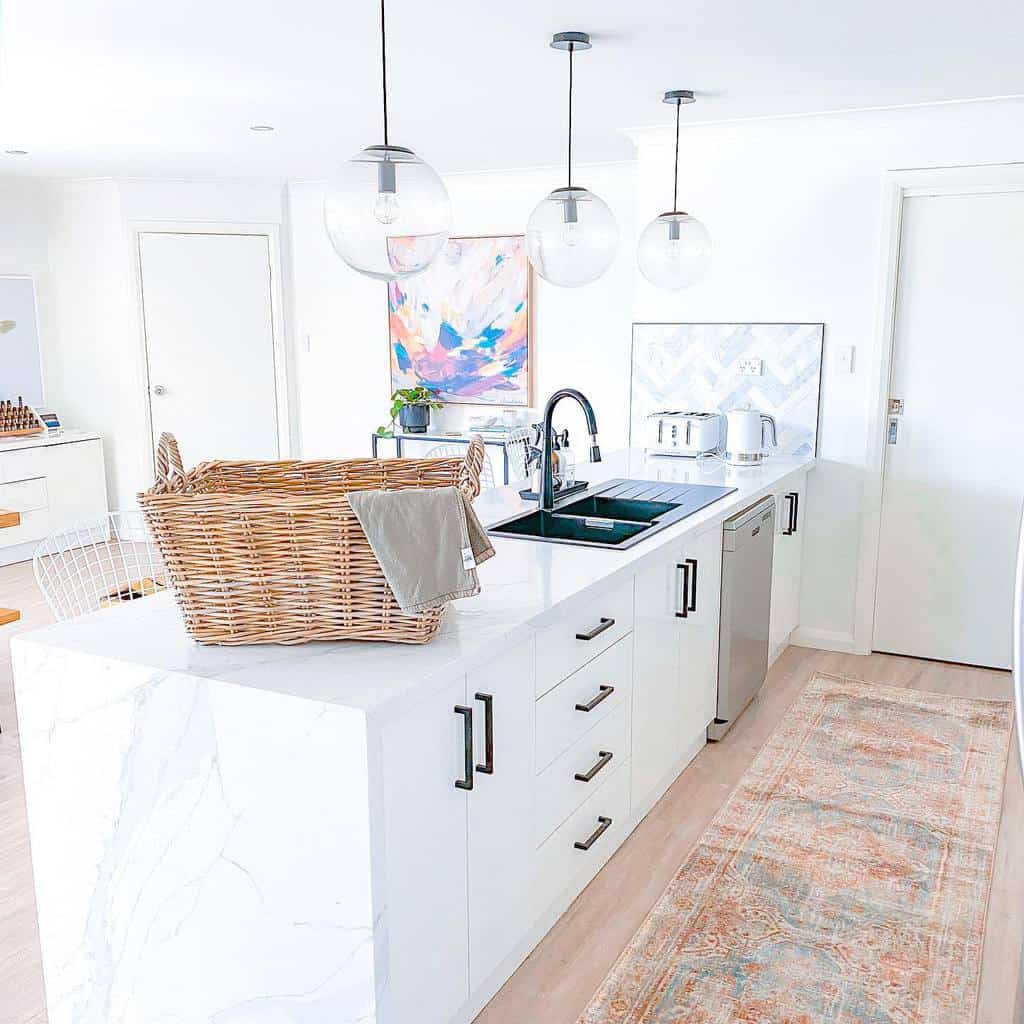



See more about - 70 Modern Farmhouse Living Room Ideas
Transitional Design FAQs
Will completing the design transformation in stages still create a big impact?
By no means must you complete a full transformation overnight. Start with a base of cozy neutrals and elevate it by adding unique accents as you see fit. Take time choosing thoughtful pieces to add to your space rather than rushing to complete the transformation.
What are the top essential elements of achieving a transitional design style?
Transitional interior design is being modern without ridding the traditional details. A soft neutral foundation is key, but it also comes to life with a splash of bold color. Soft lines and textures work cohesively to add interest and complexity to achieve the overall style.
Am I limited to only one accent color?
Not at all. By letting the neutral color palette dominate the room, you can easily add a secondary accent color to the room. The best option, however, will be to vary different tones within the same shade to avoid congestion. Variants of bold hues will work to add layers of depth, nonetheless creating an overall contemporary vibe for your space.



